Can you decode the message – Gaygenda Galore Oh Batman Yes Robin Pull That Rope
Why are ‘superheroes’ clad in tights?
What is the message? The insemination, er, intention? Predicktive-programming? LGBTQIA an acronumb for Let’s Get Boywonder To Queef Intra Anally?
- 0:14 Jerry Lewis
- 0:54 George Cisar
- 1:03 Dick Clark
- 1:40 Green Hornet & Kato
- 2:14 Sammy Davis Jr.
- 2:50 Bill Dana
- 3:28 Howard Duff
- 4:08 Colonel Klink (Werner Klemperer)
- 5:10 Lurch
- 5:35 Don Ho
- 6:22 Santa Claus (Andy Devine)
- 7:25 Art Linkletter
- 8:35 Edward G. Robinson
- 9:43 Susie Knickerbocker
- 11:10 Carpet King
R.I.P.
- Edward G. Robinson (1893-1973)
- Bruce Lee (1940-1973) (Kato)
- Andy Devine (1905-1977) (Santa Claus)
- Ted Cassidy (1932-1979) (Lurch)
- George Cisar (1912-1979)
- Cyril Lord (1911-1984)
- Sammy Davis Jr. (1925-1990)
- Howard Duff (1913-1990) (Sam Stone)
- Werner Klemperer (1920-2000) (Colonel Klink)
- Don Ho (1930-2007)
- Art Linkletter (1912-2010)
- Dick Clark (1929-2012)
- Suzy Knickerbocker (1918-2016)
- Van Williams (1934-2016) (The Green Hornet)
- Adam West (1928-2017) (Batman)
- Bill Dana (1924-2017) (José Jiménez)
- Jerry Lewis (1926-2017).
I love how everyone is leaning out their window at 90 degrees. It happened every episode. This show was 30% Batmobile, 30% villains, and 40% Batman and Robin slowly walking up tall buildings.
“You dipped your diphthong. People in Philadelphia are known for that.” Now that’s some comedy writing there.
https://www.youtube.com/watch?v=WmyCgHyiNcE
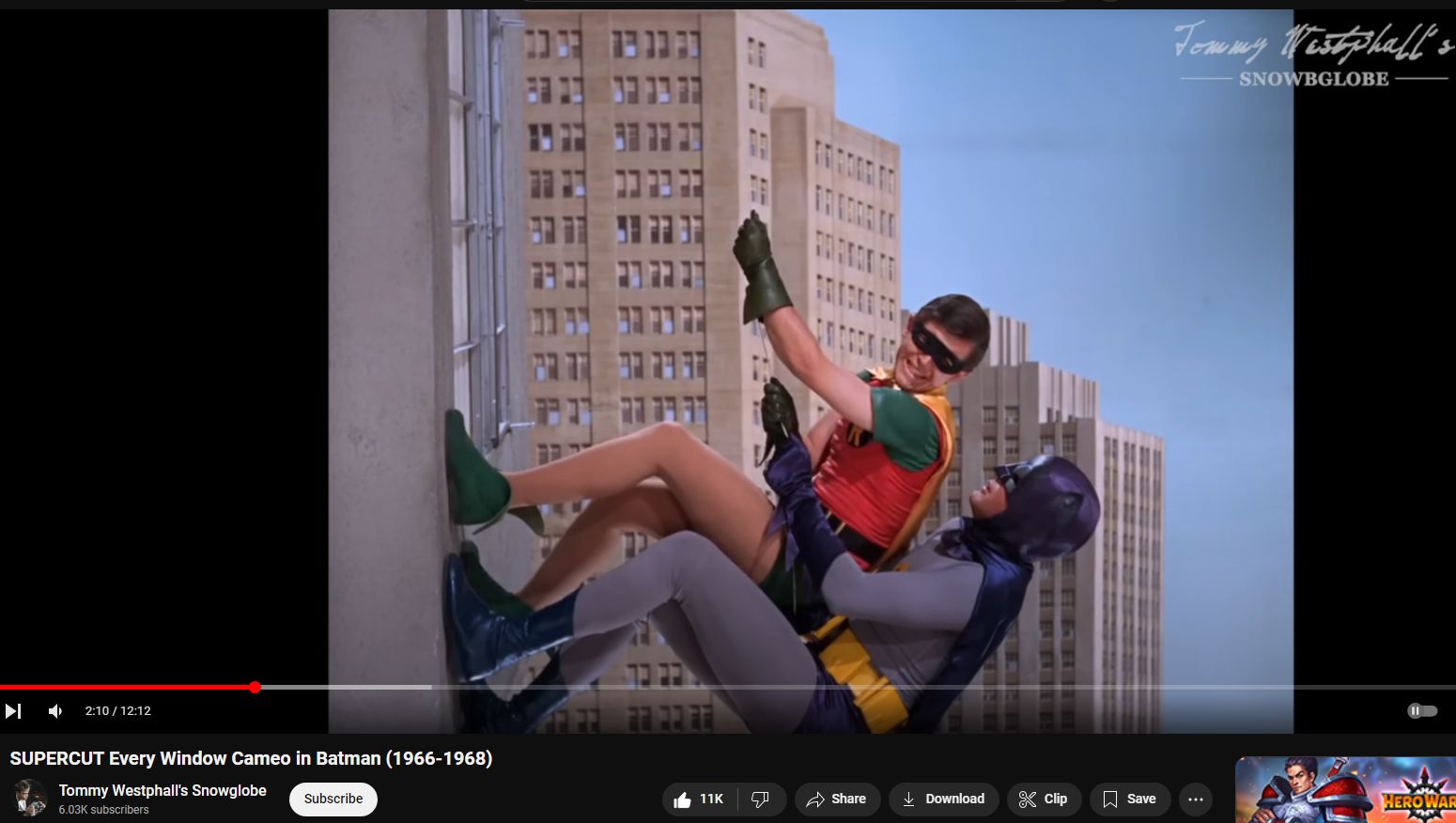
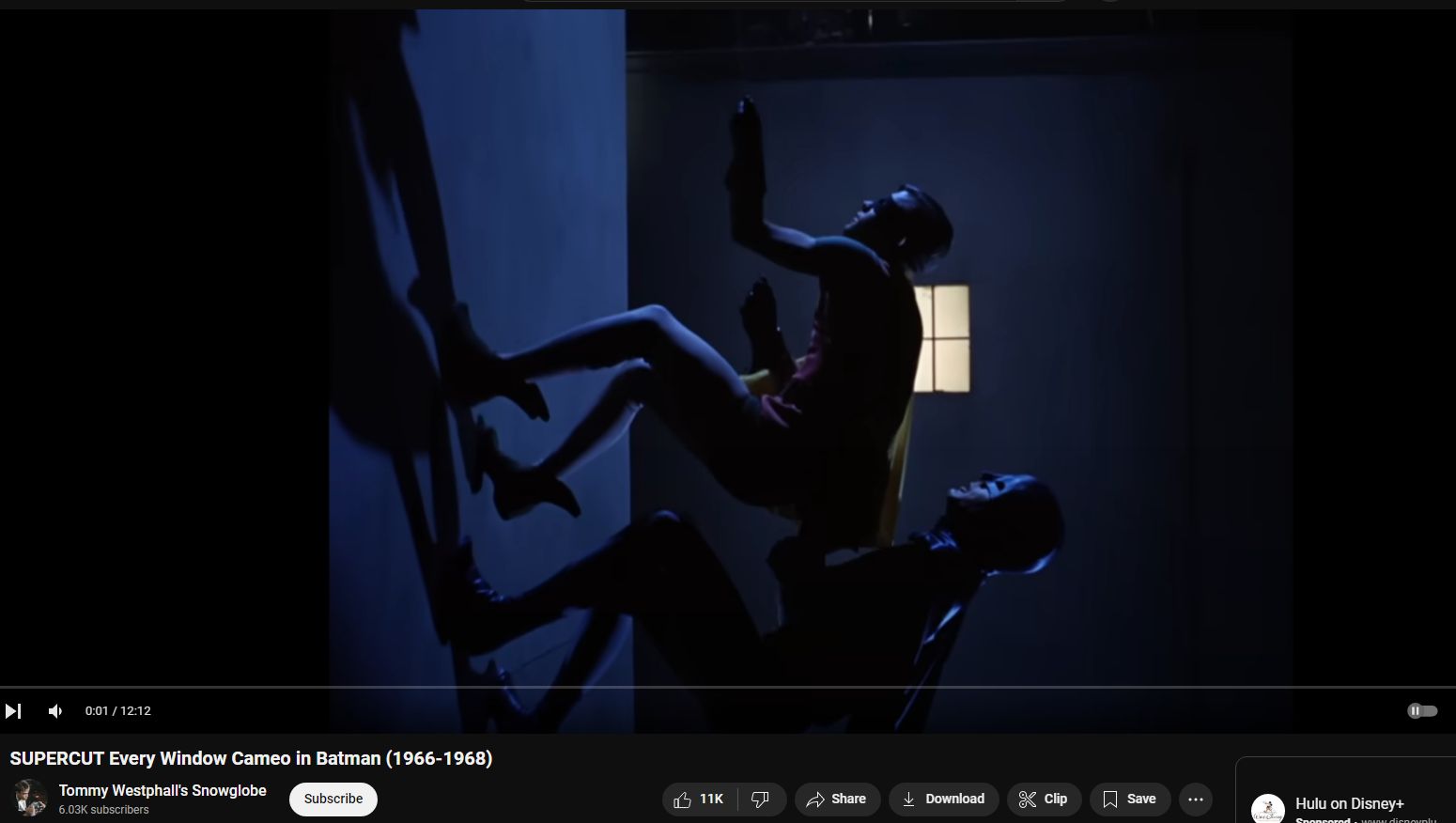
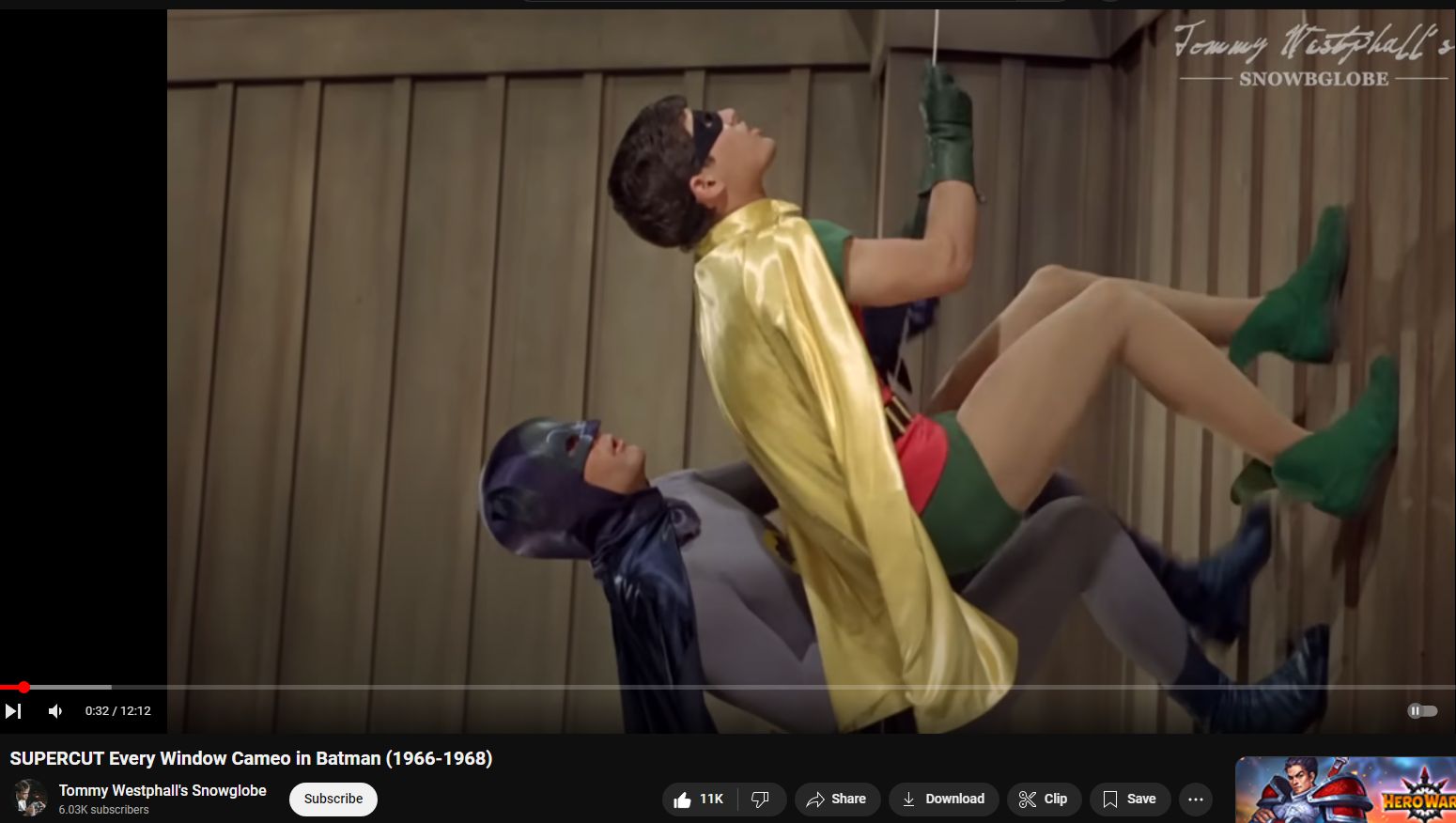
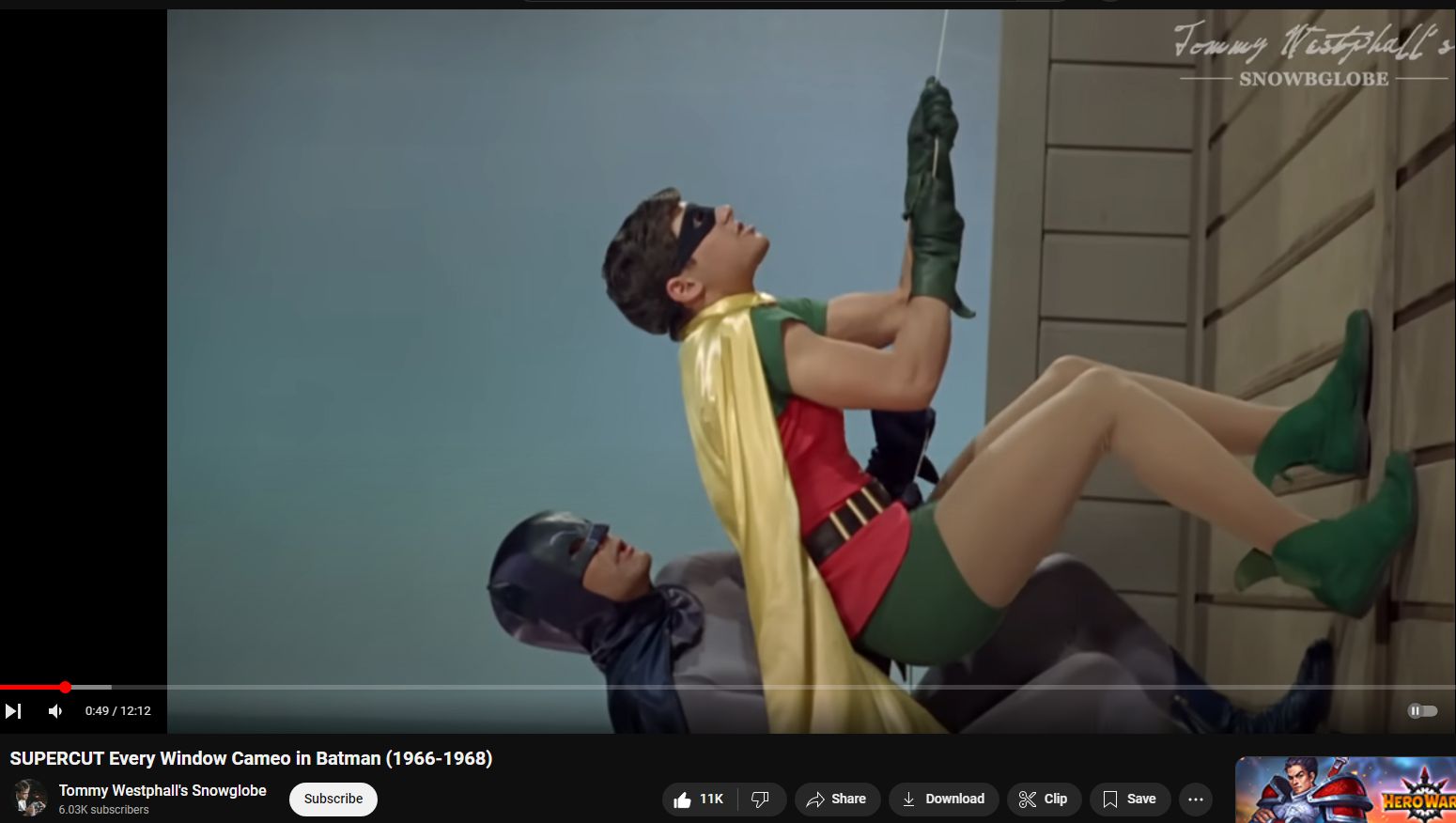
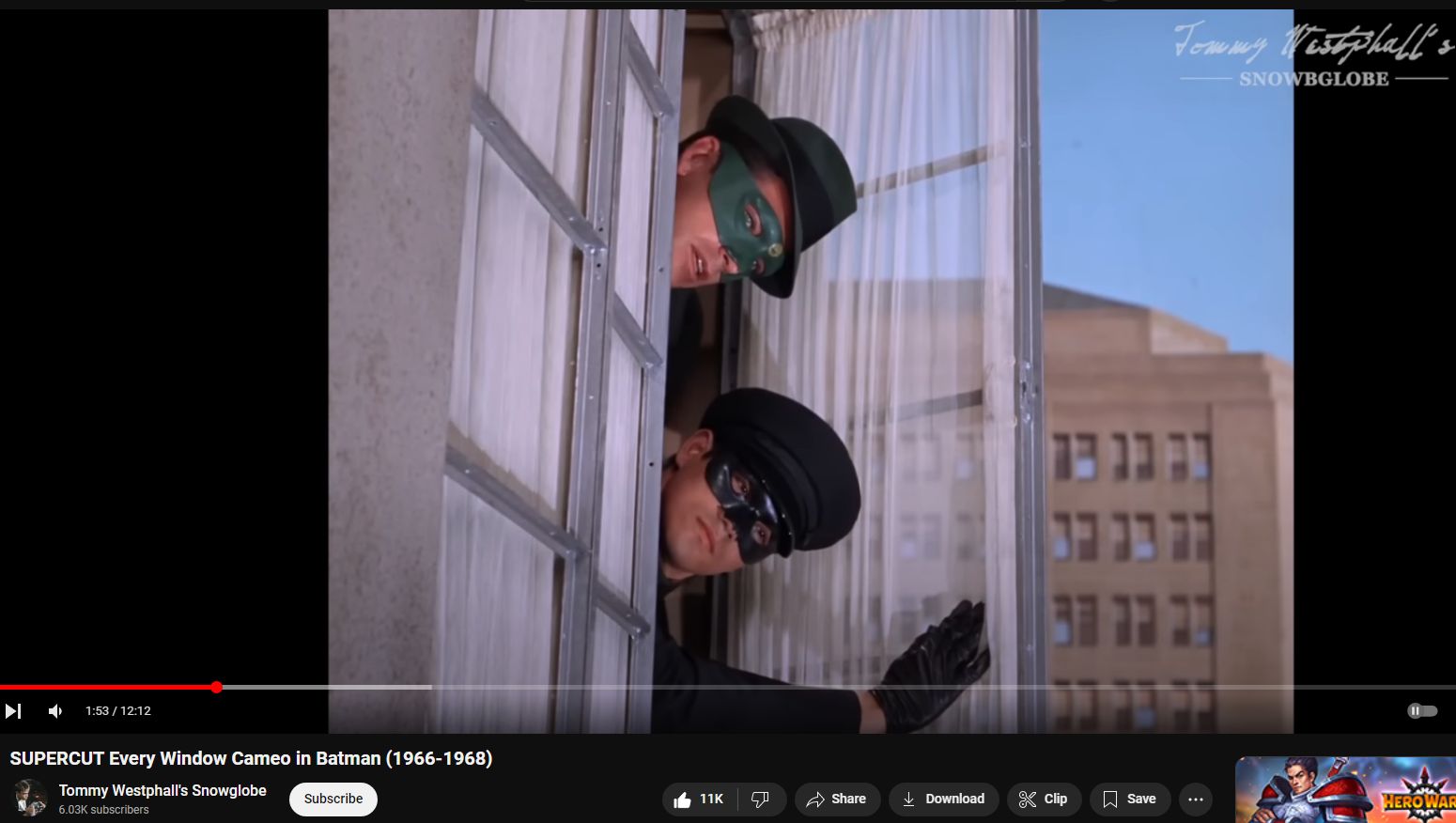

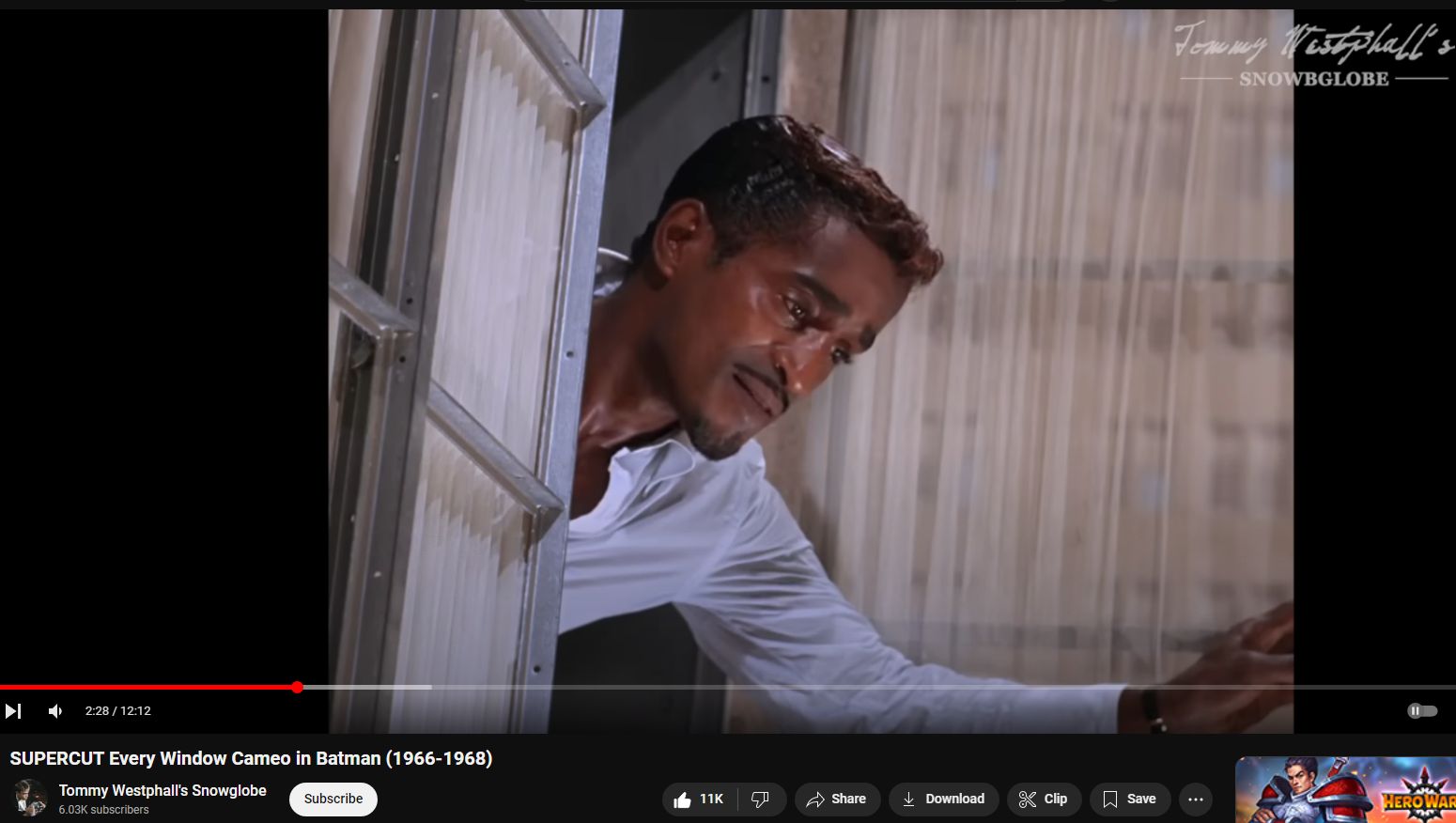
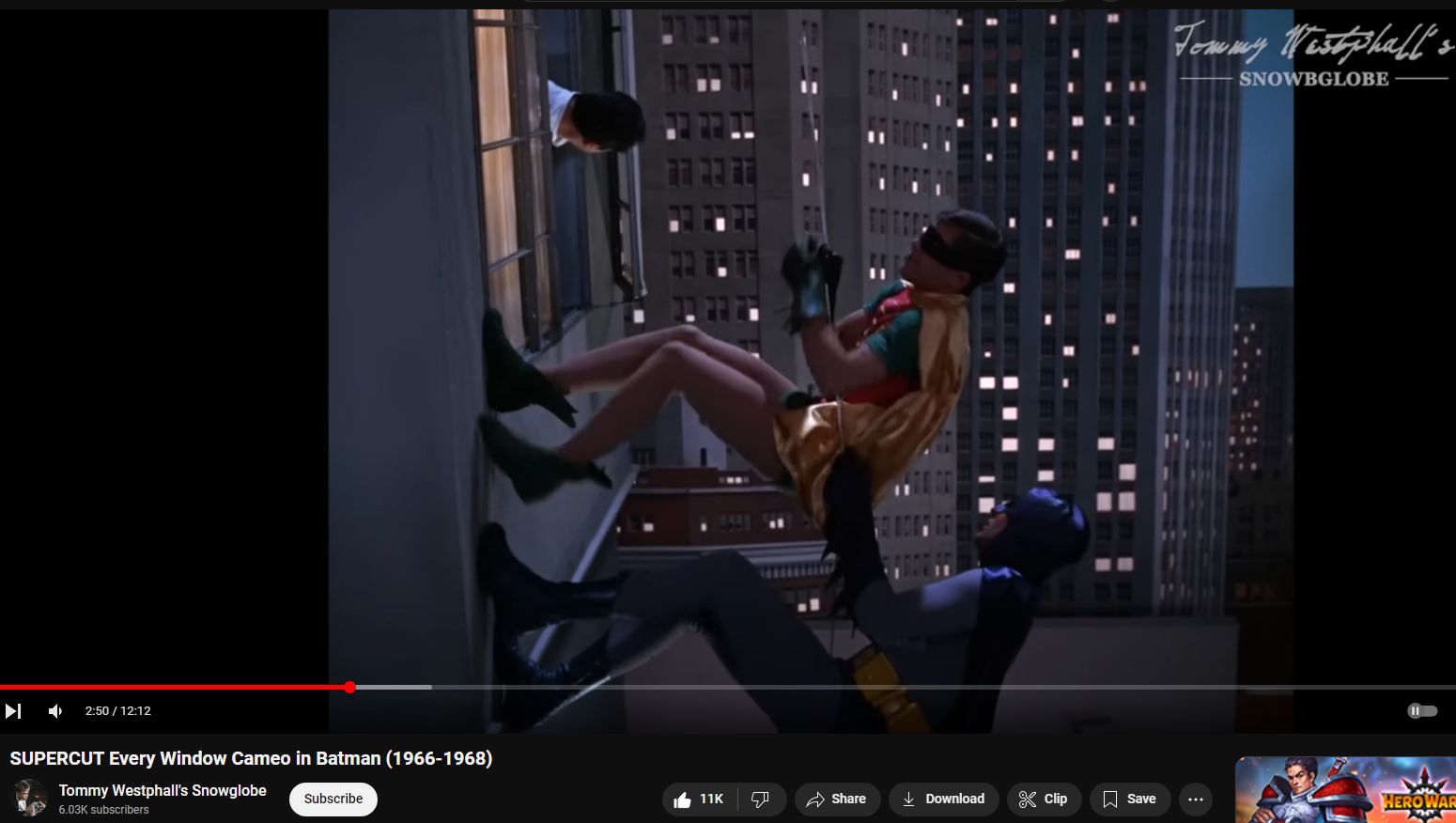
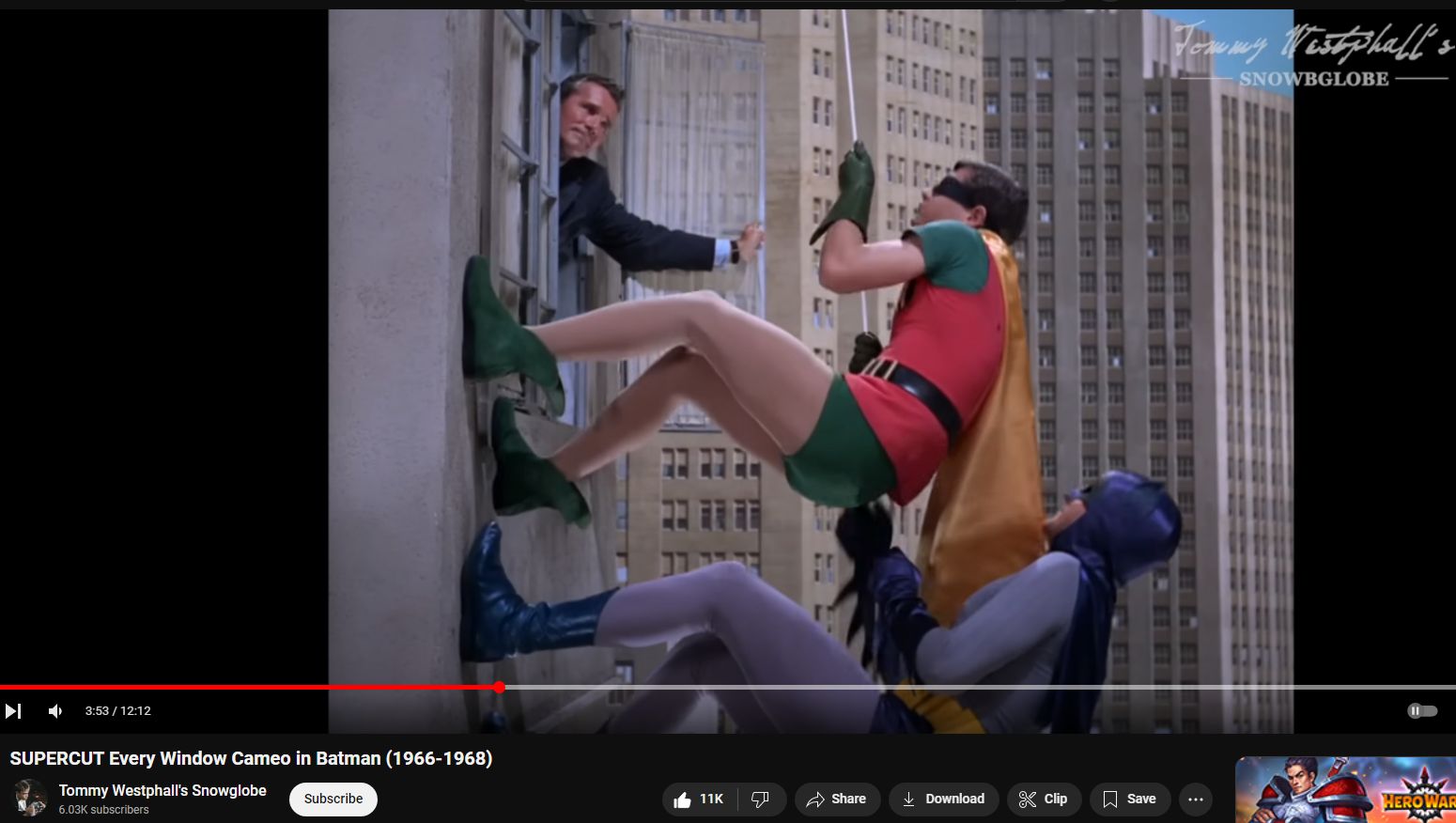
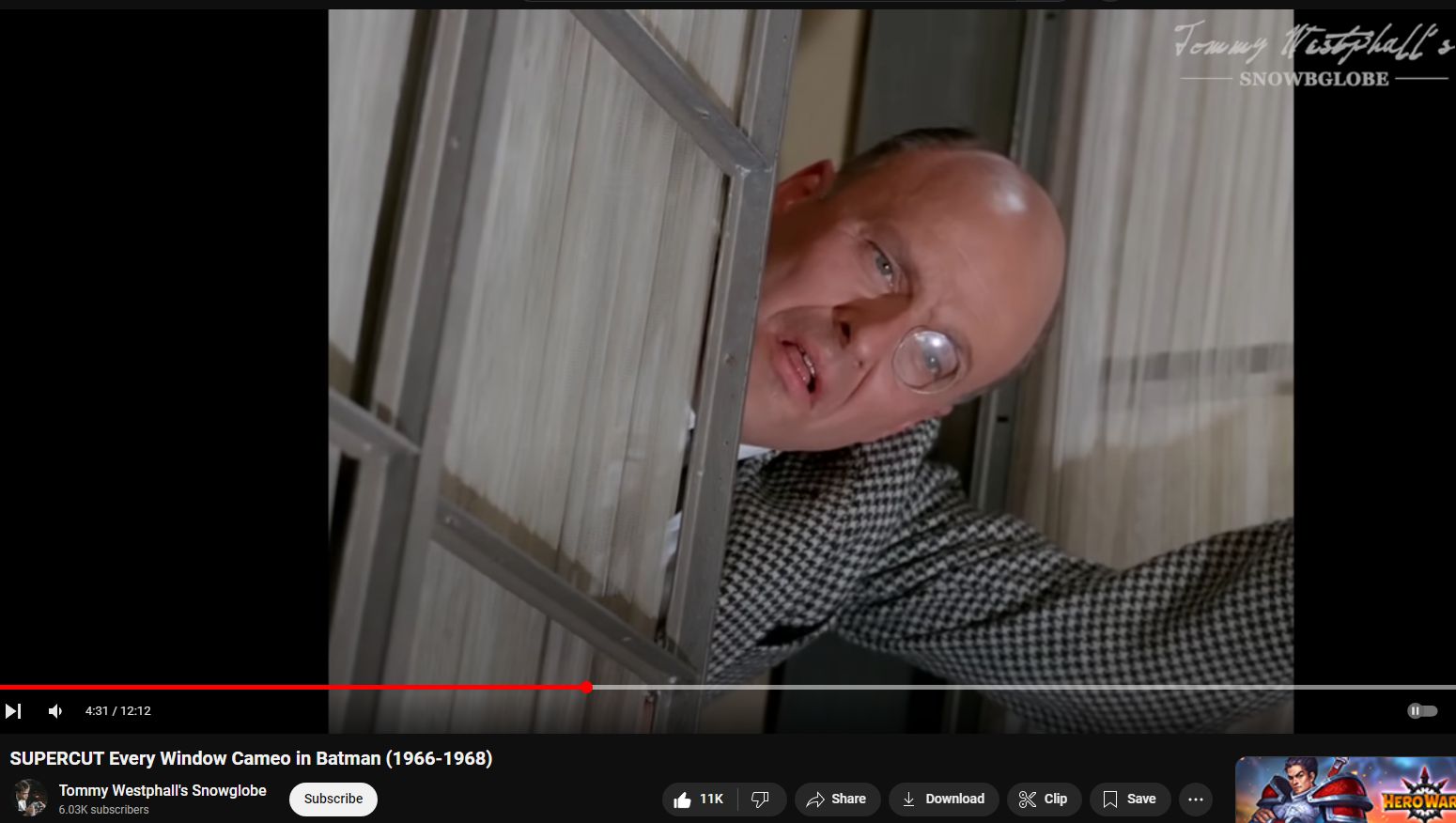
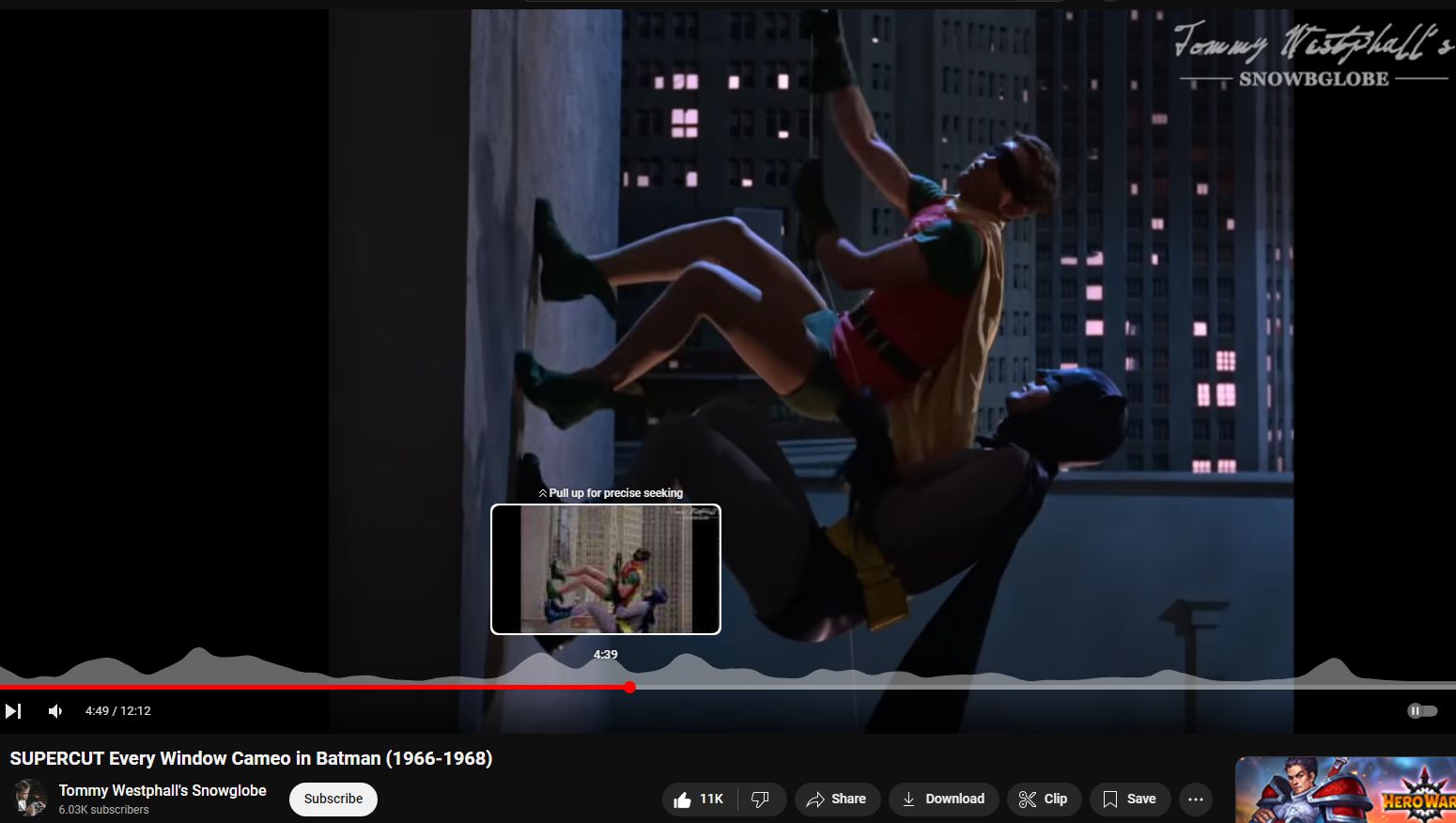
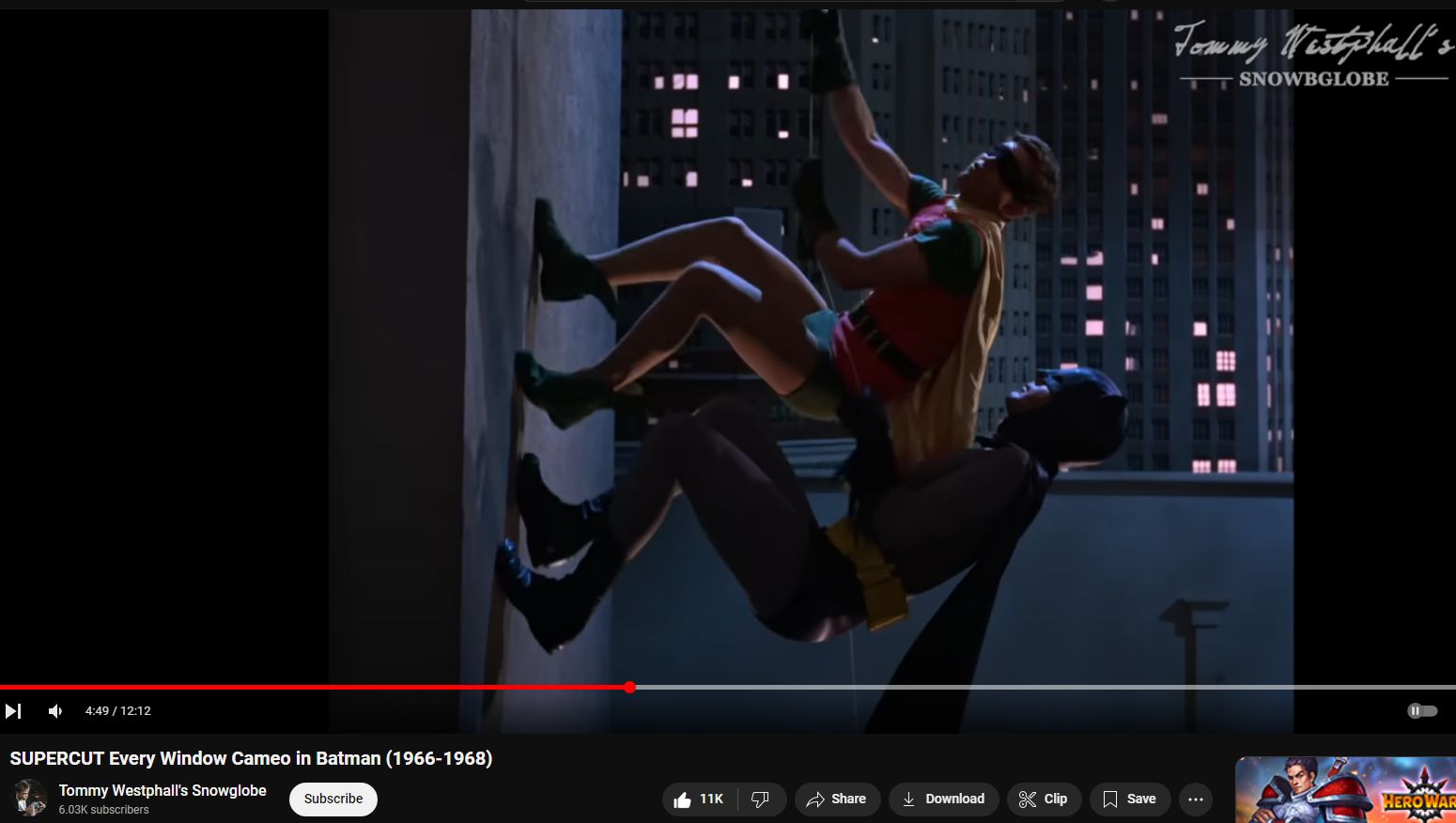
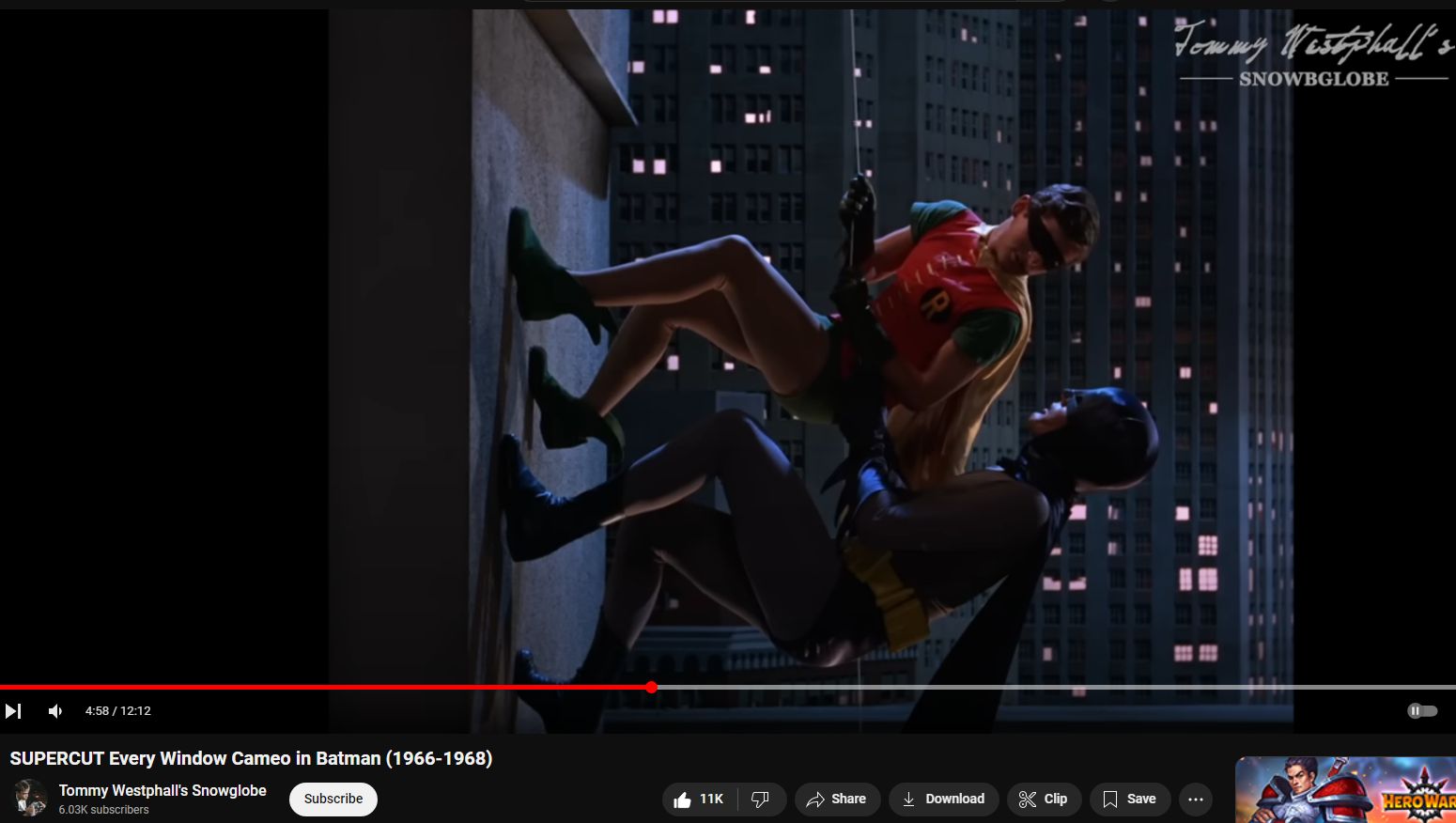
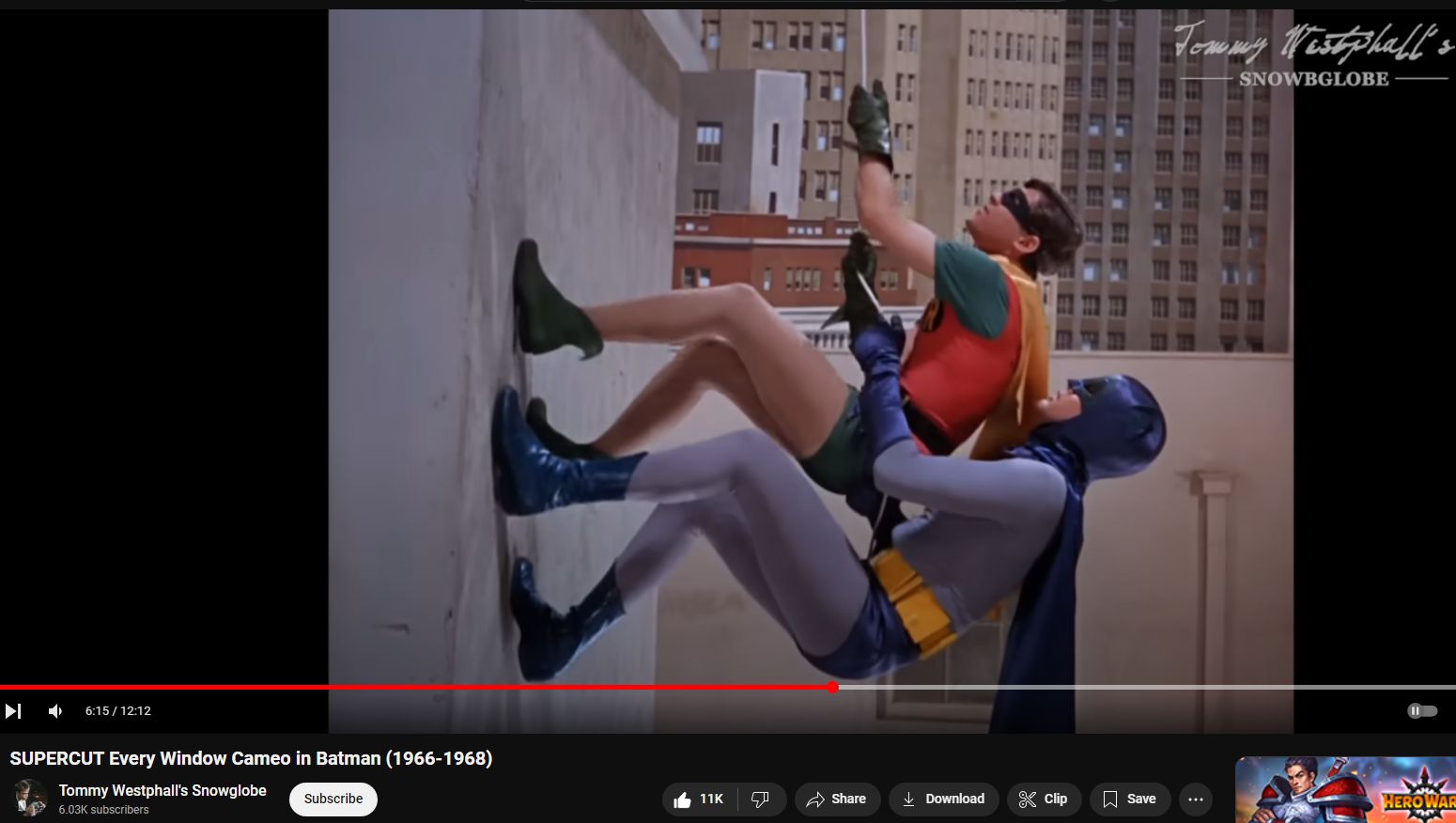
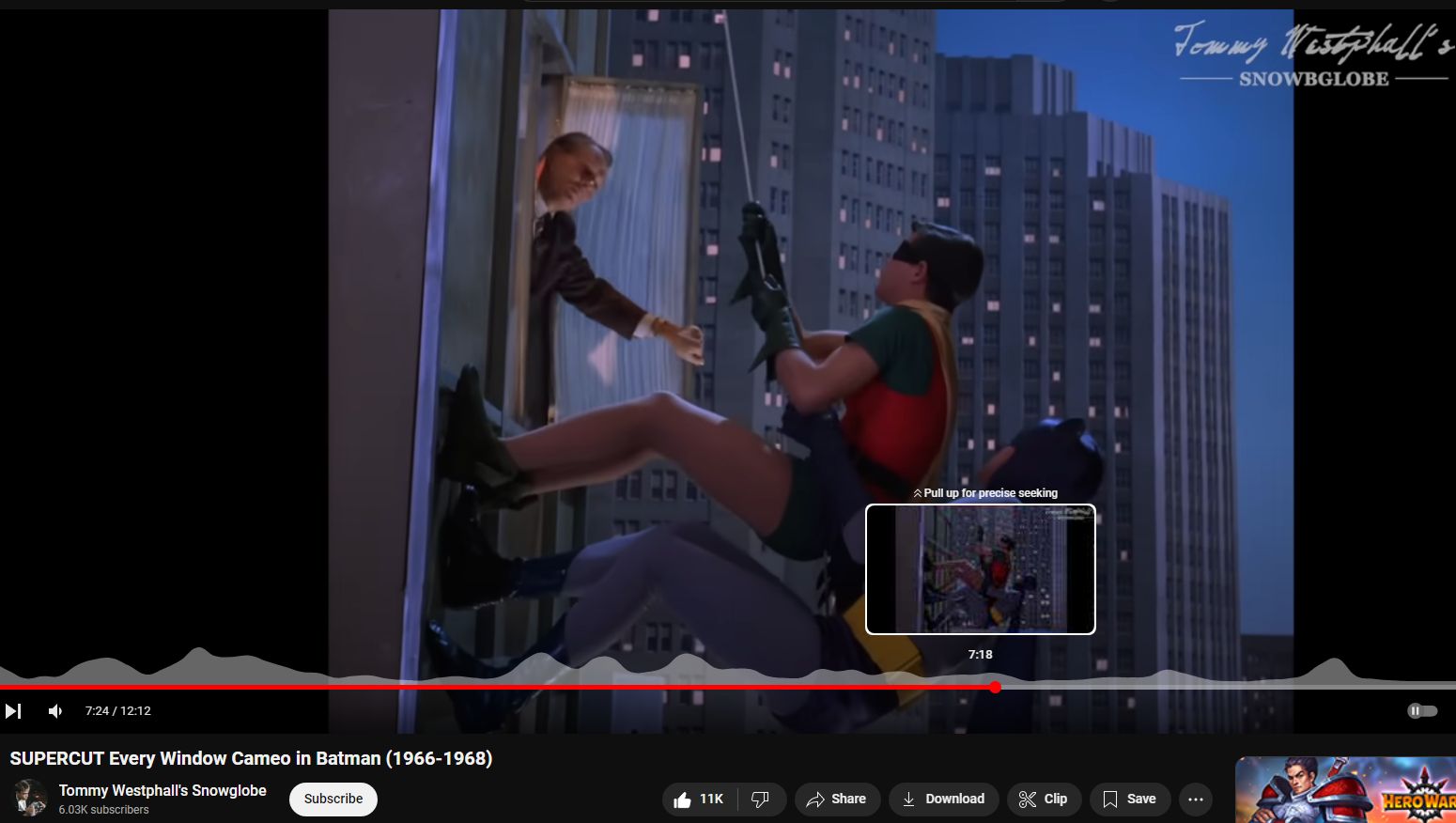
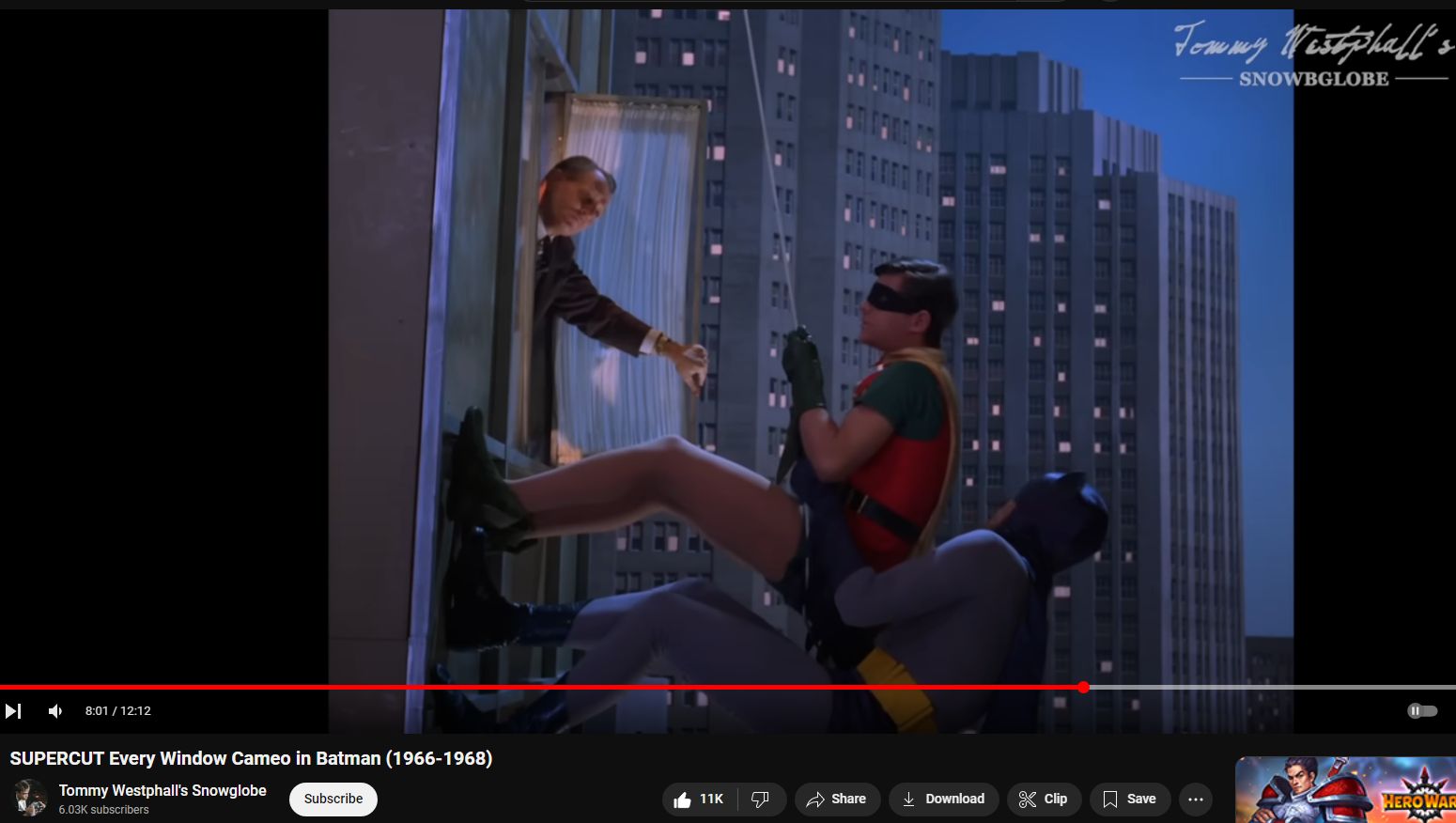
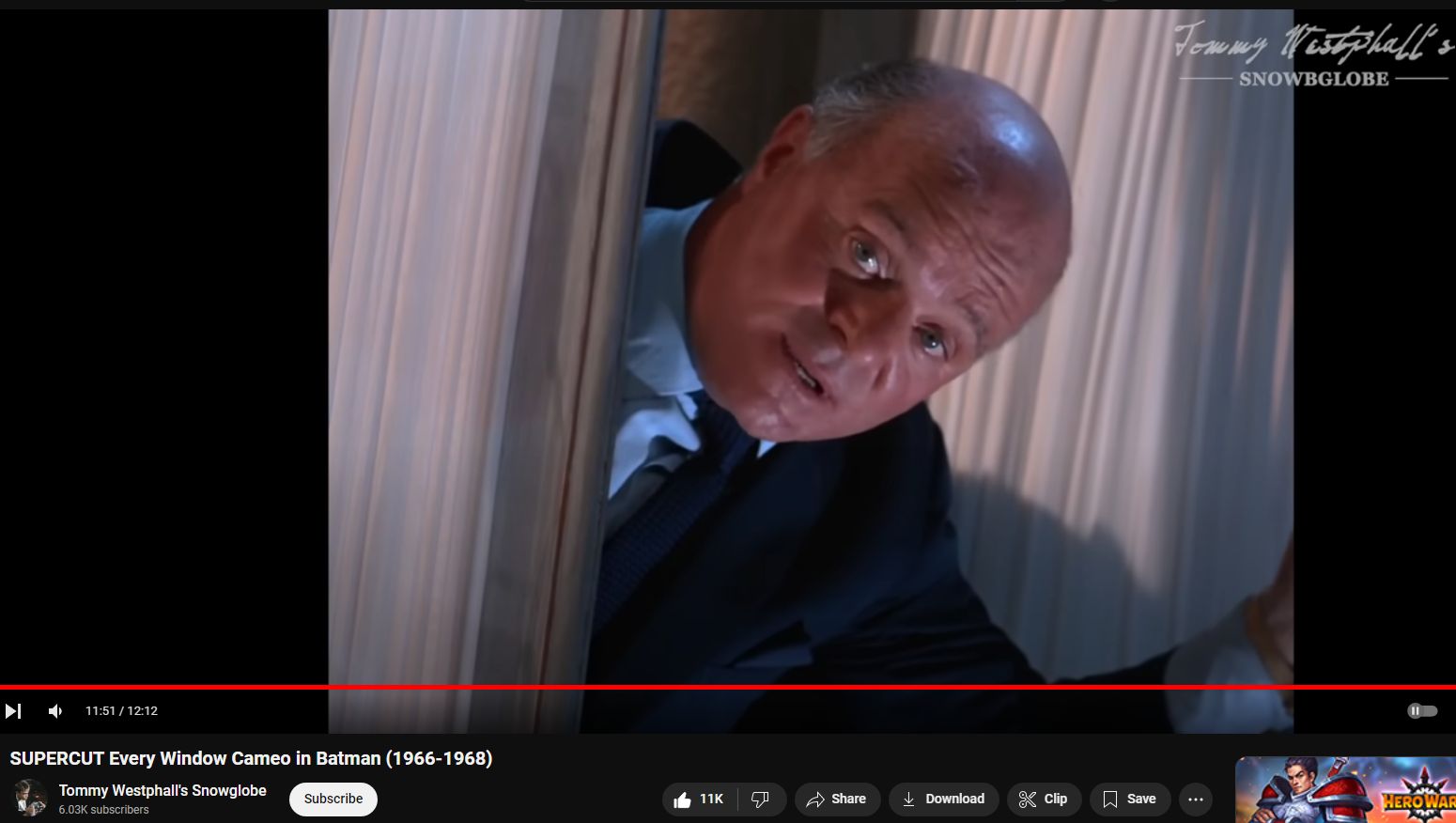
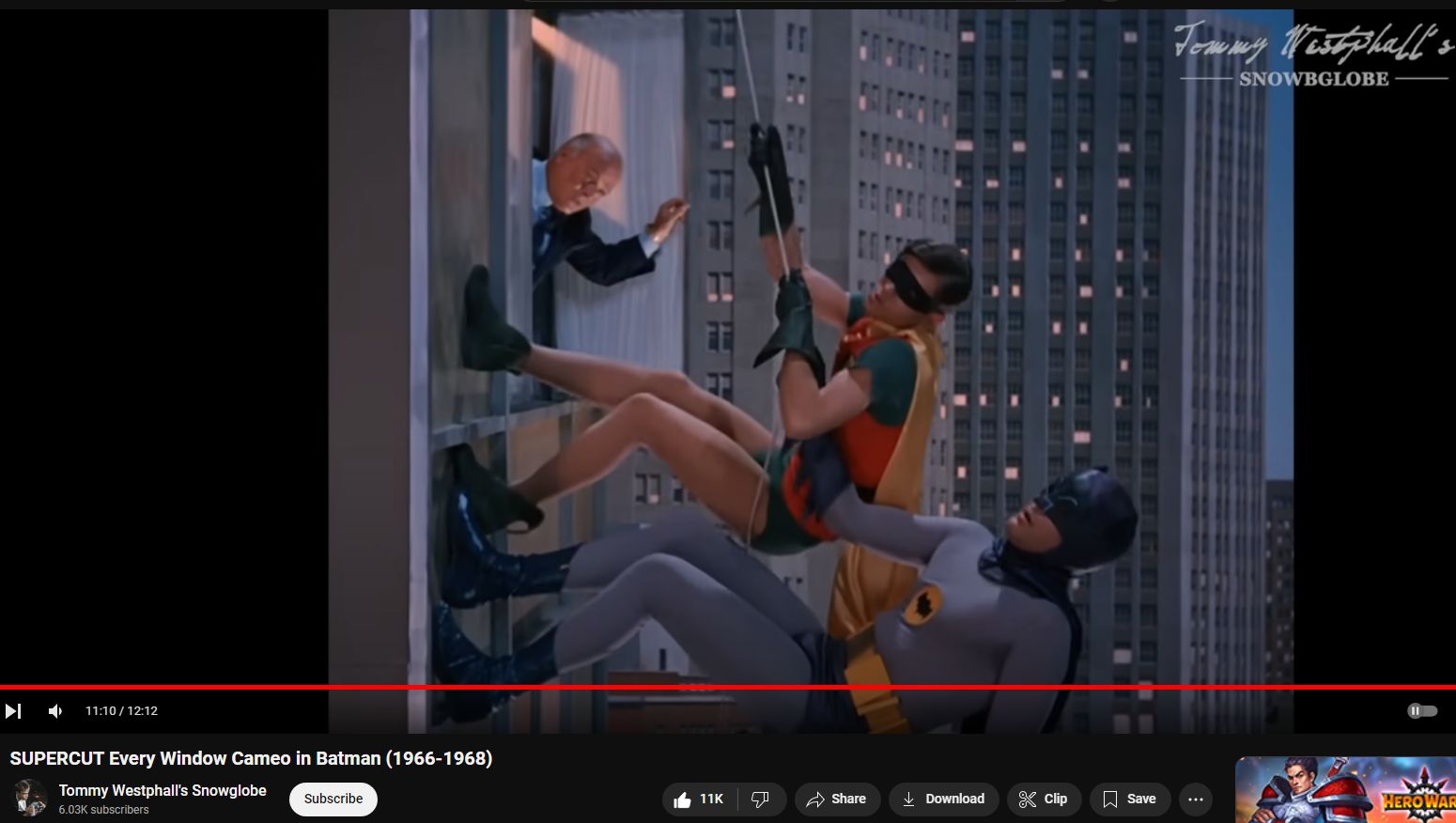
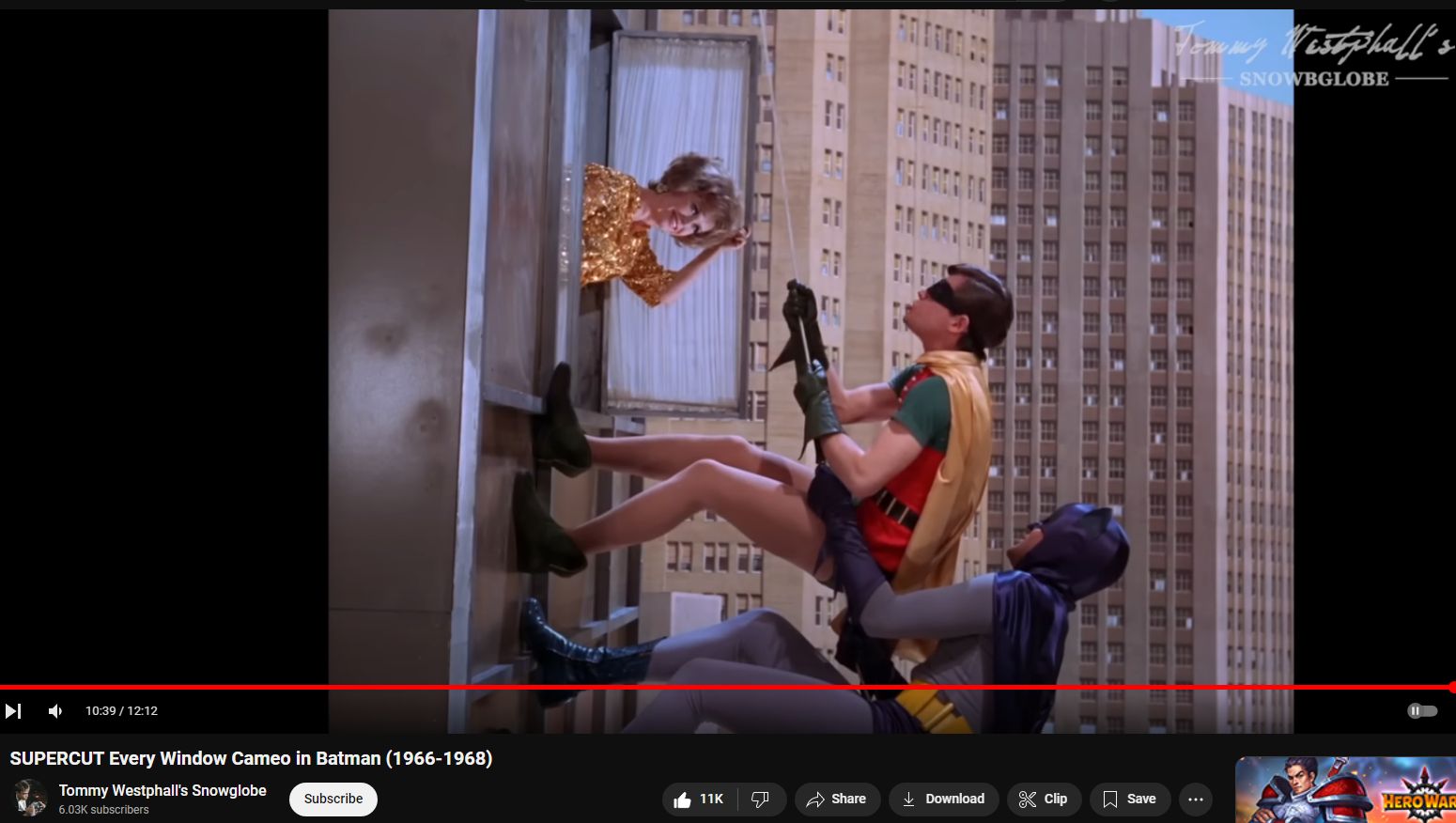
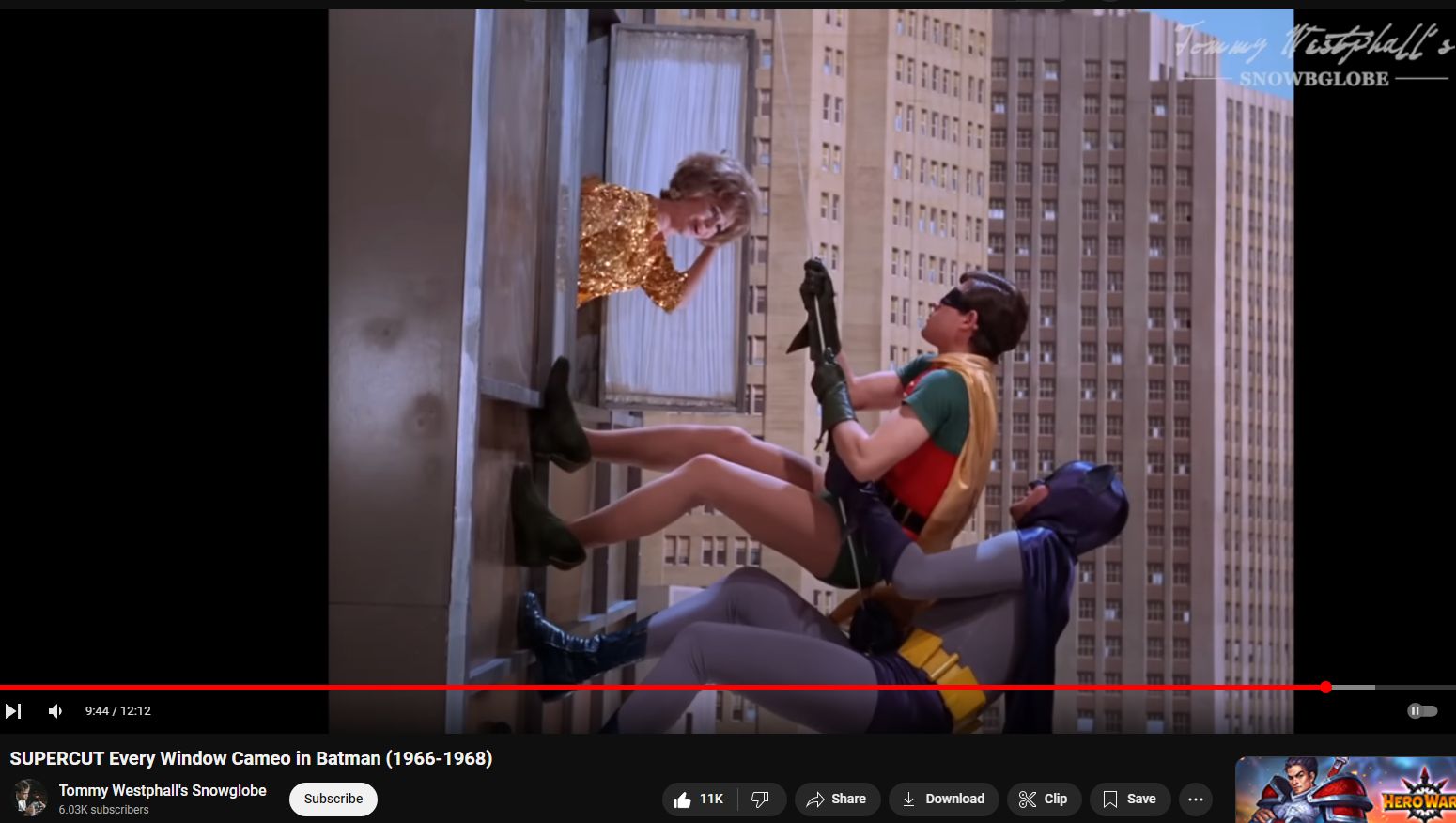
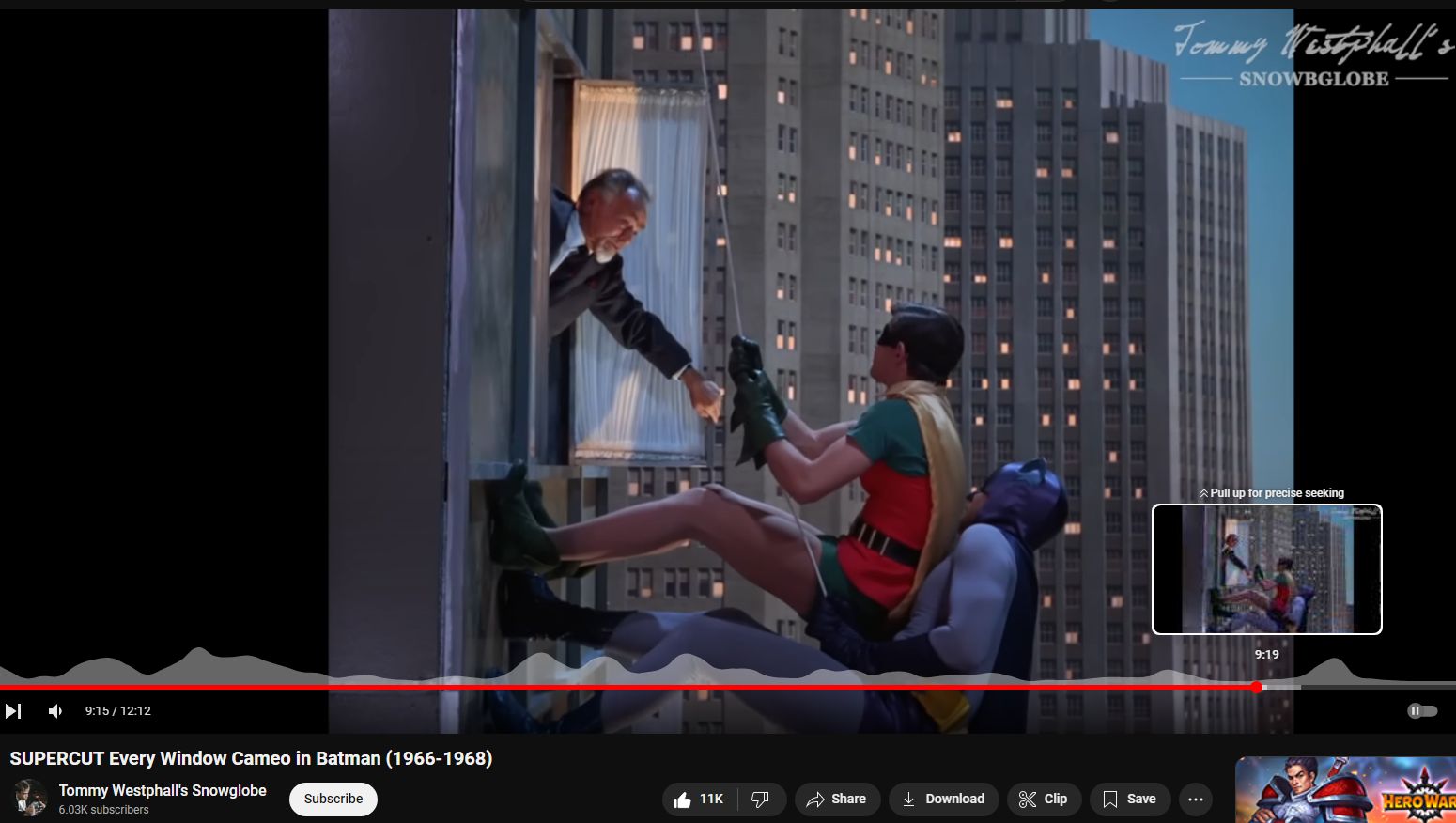
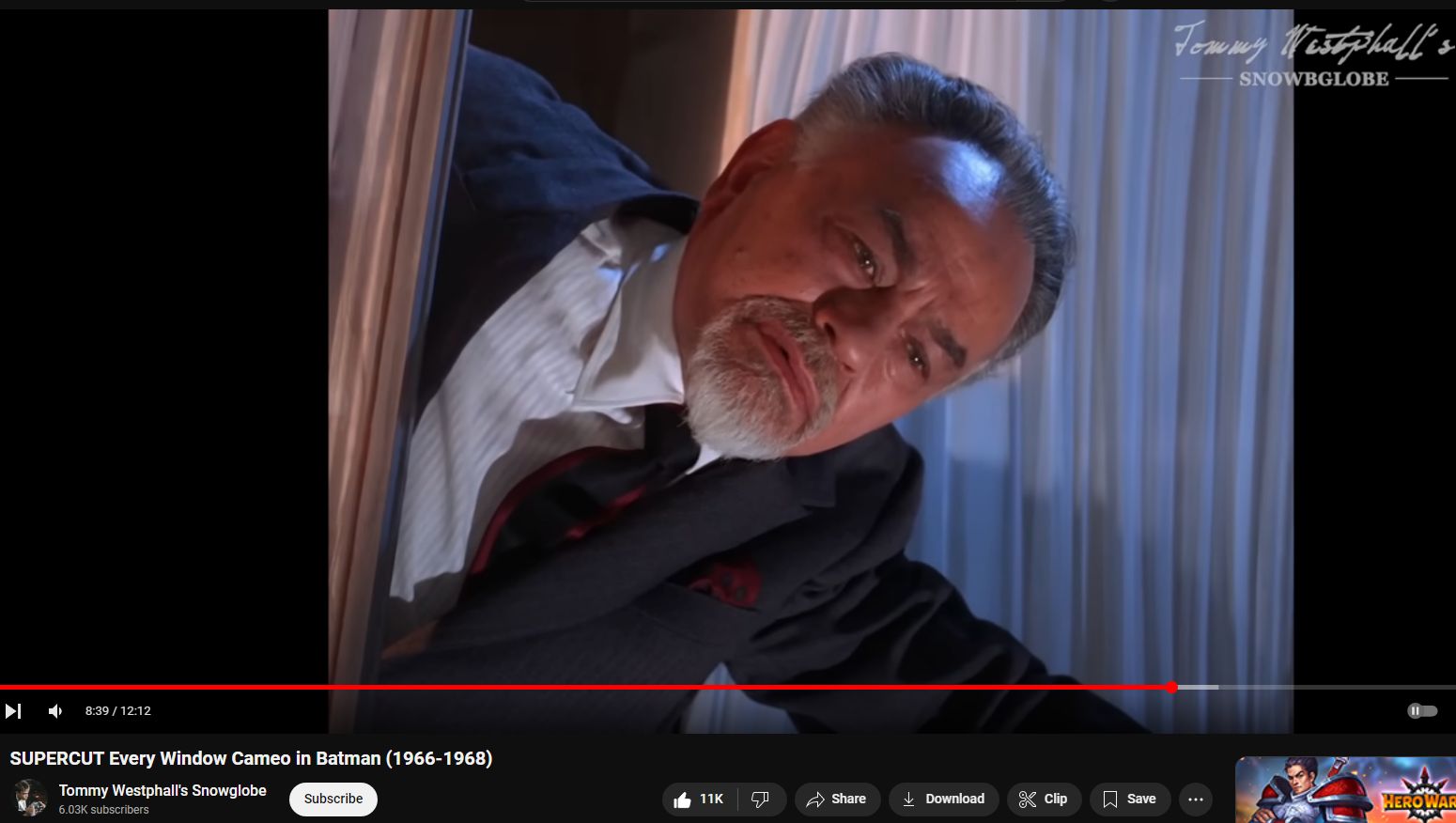
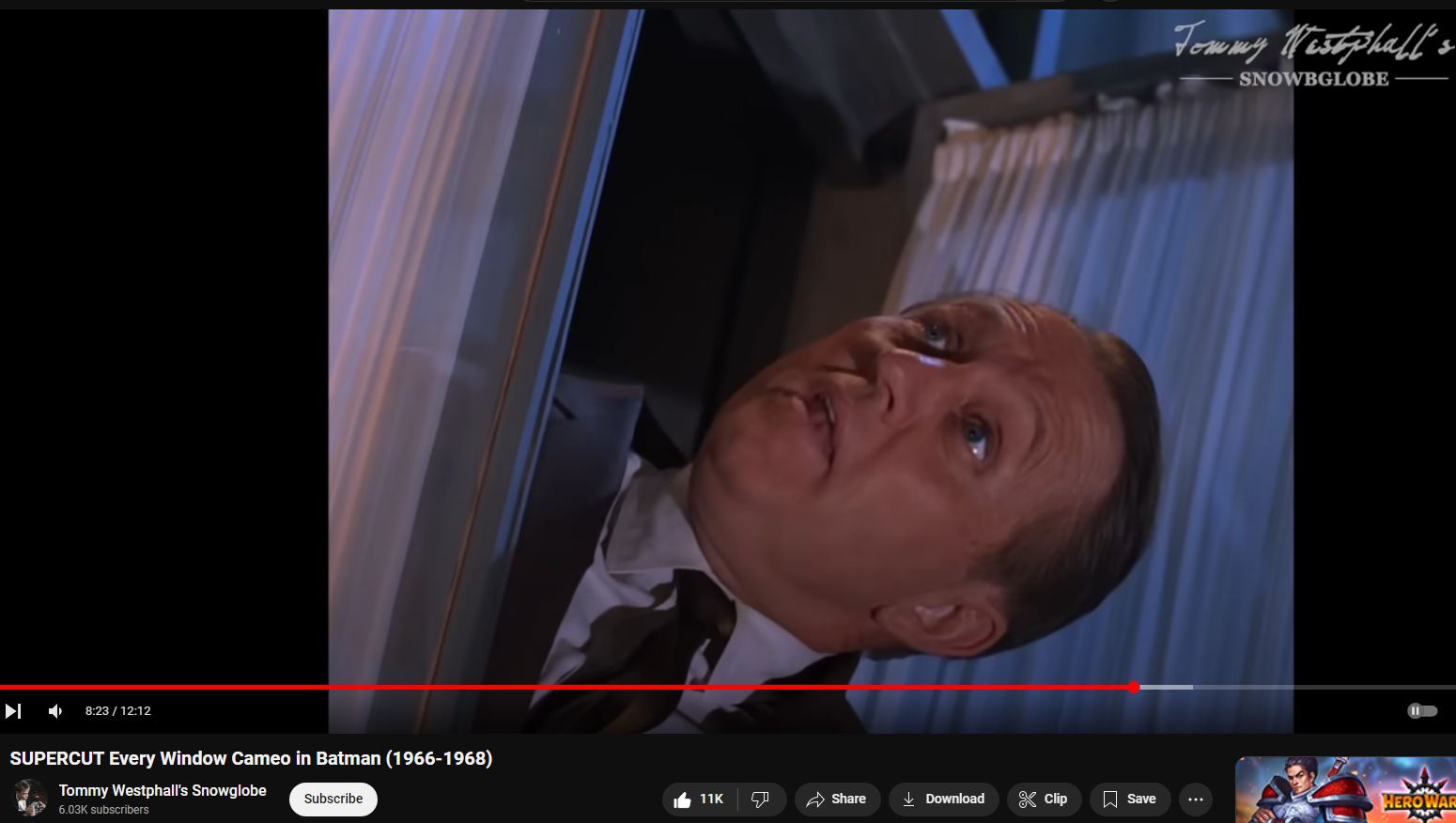
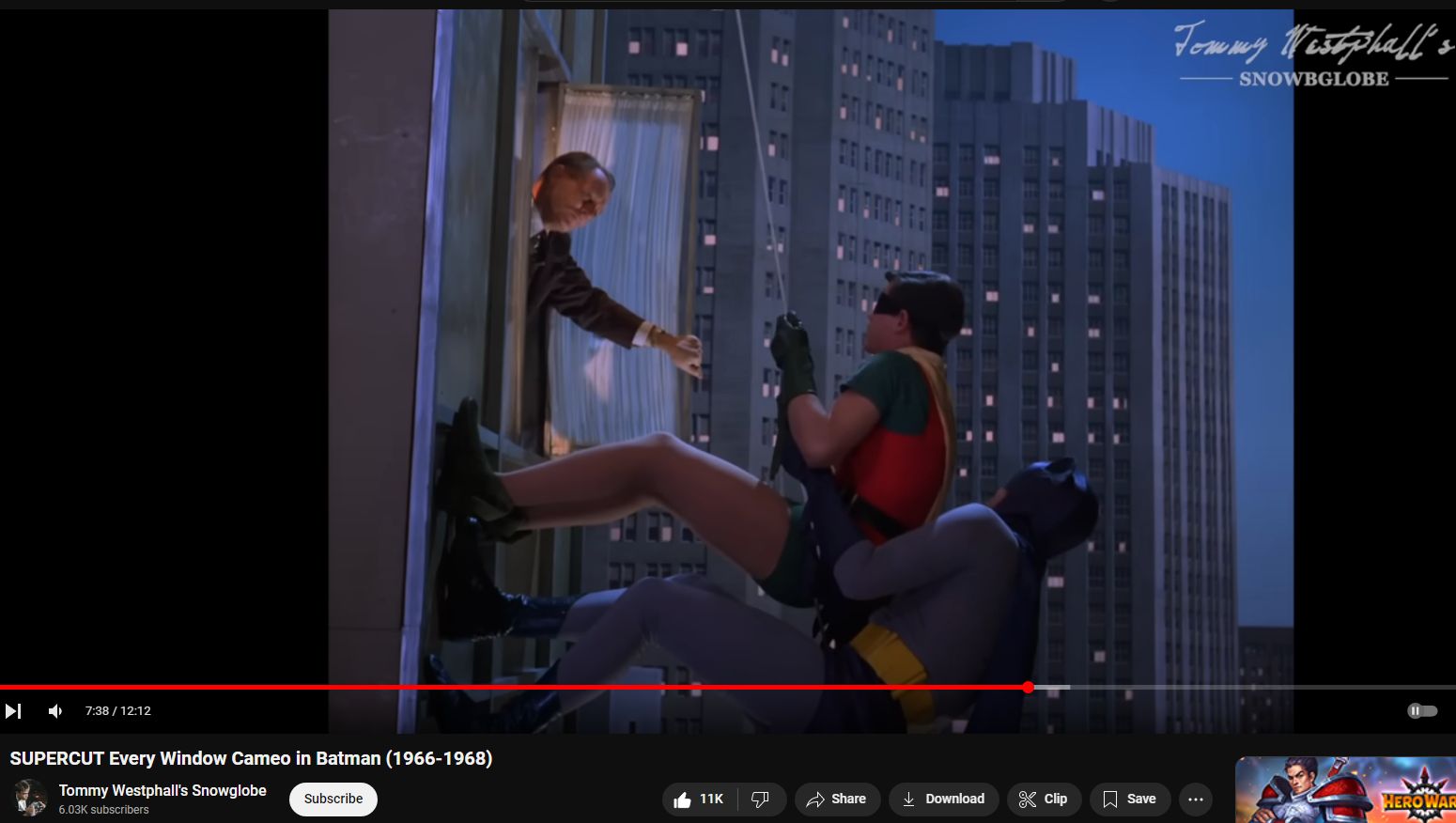
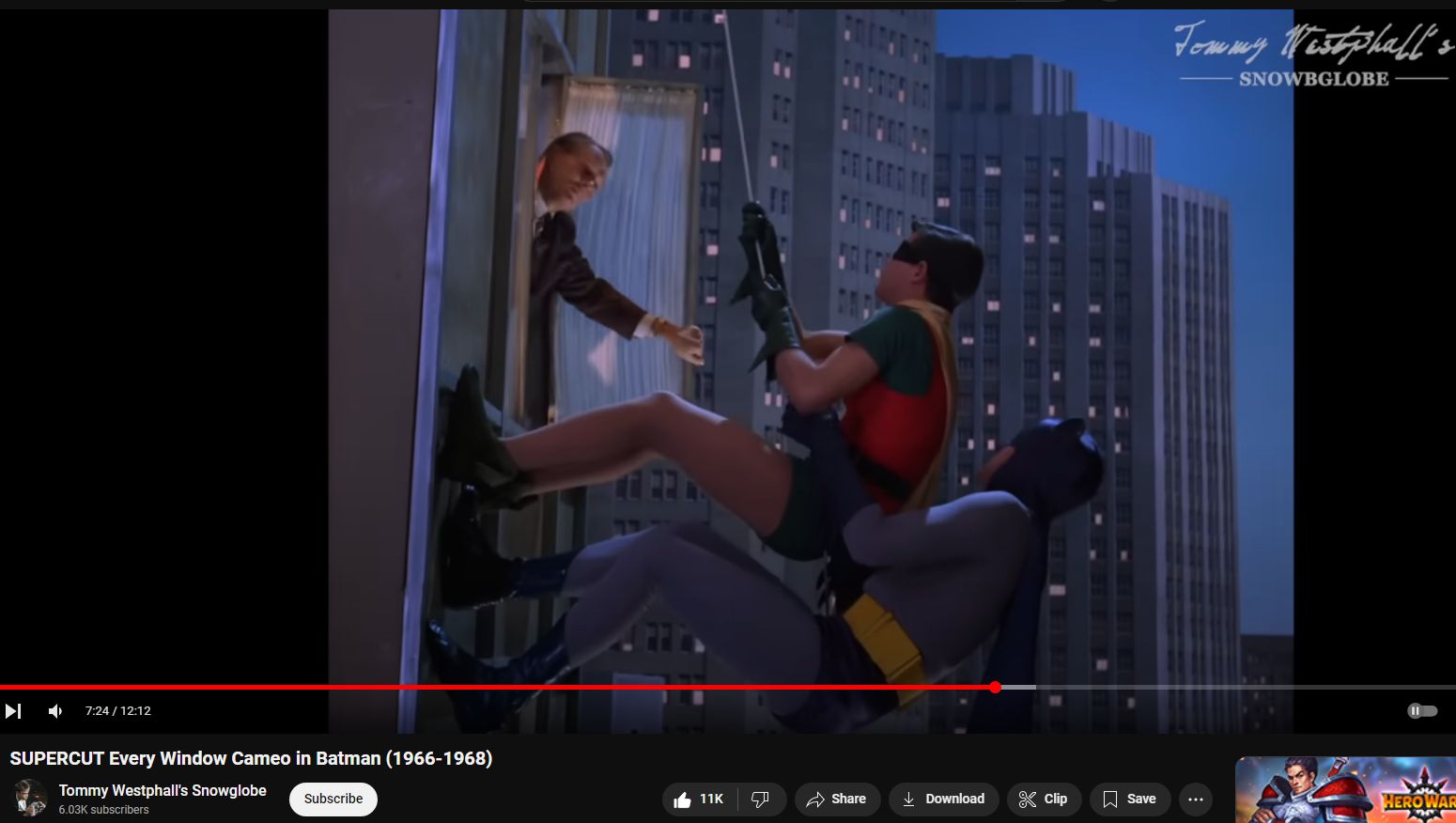
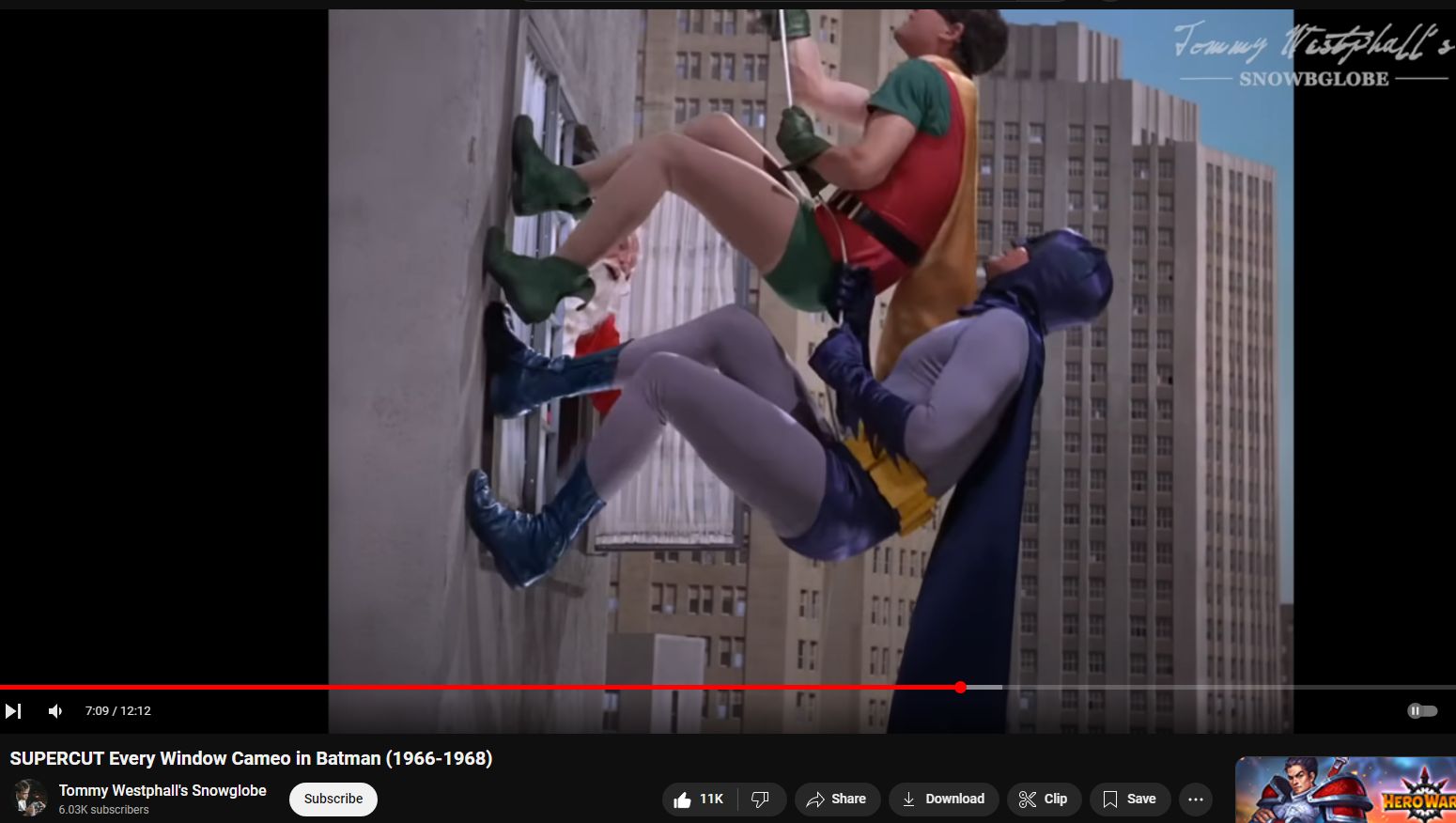
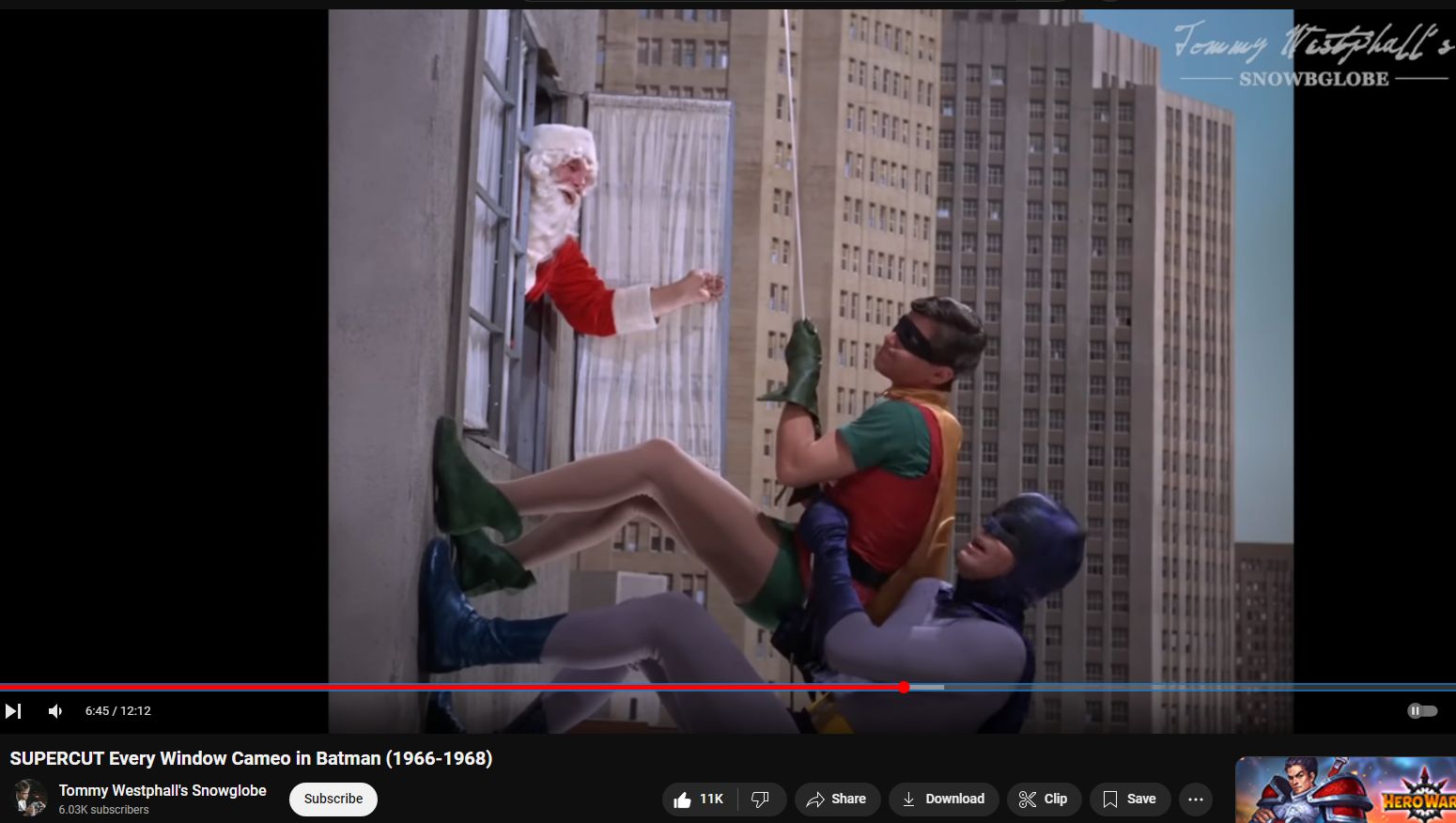
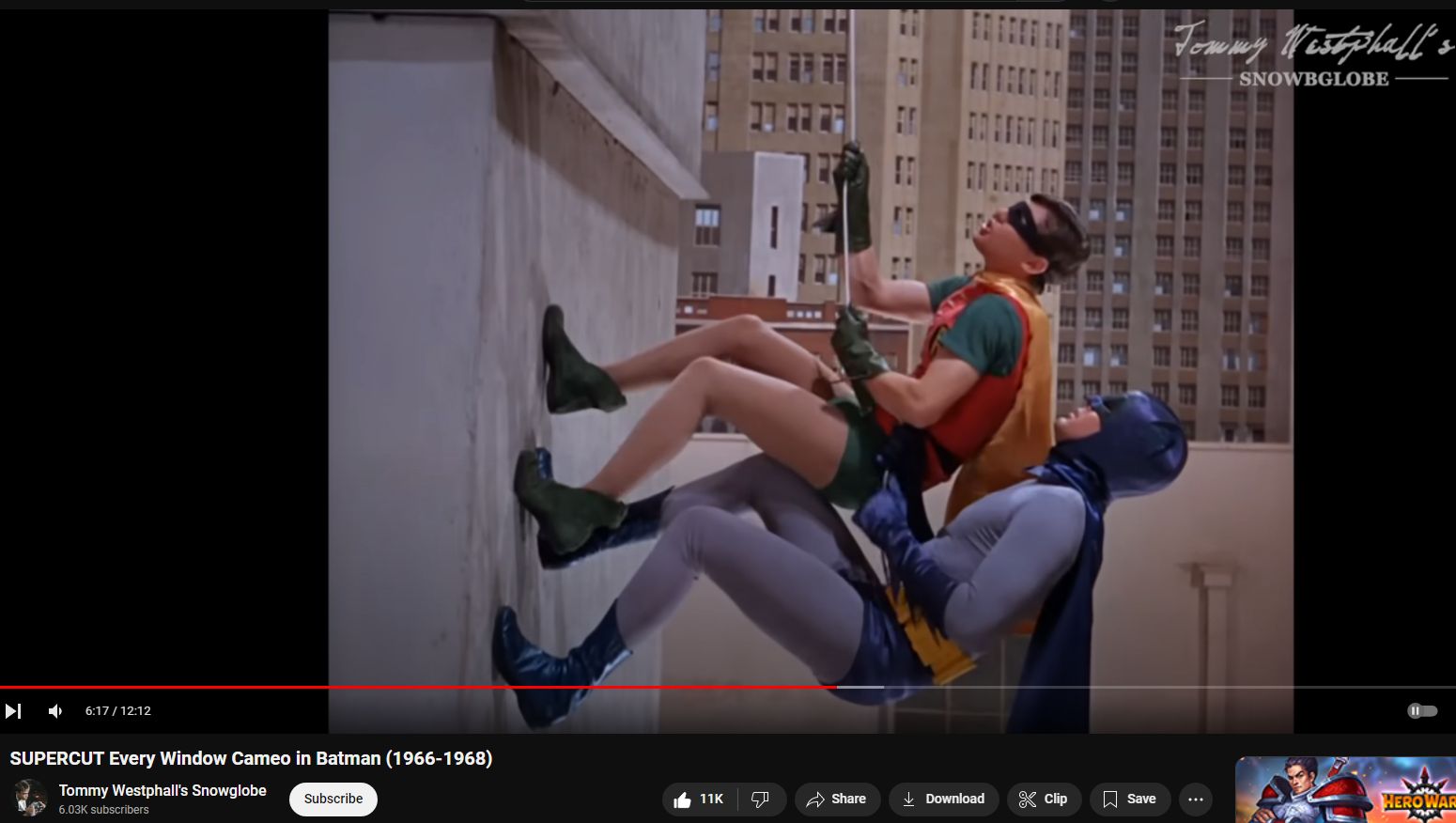
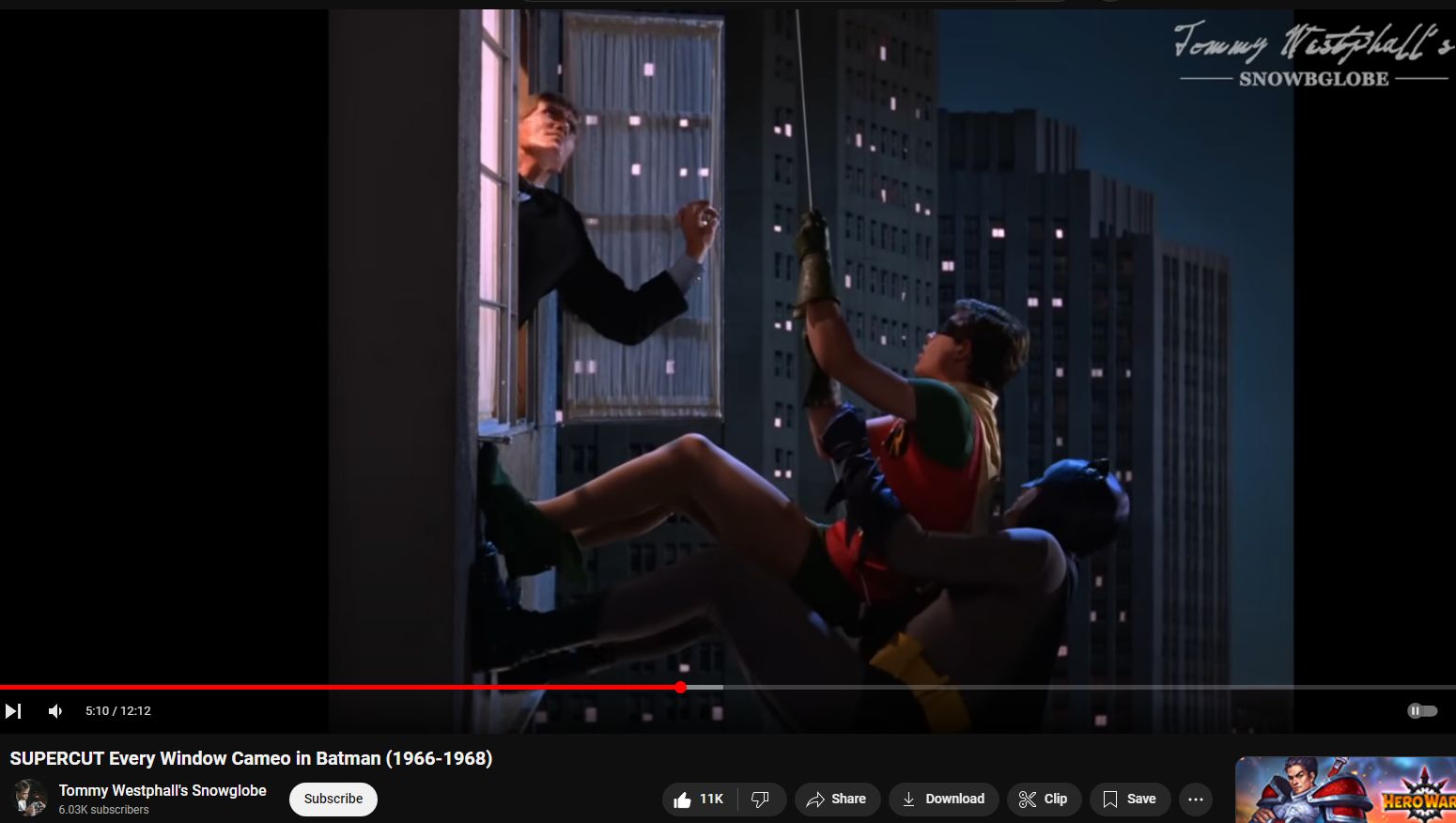
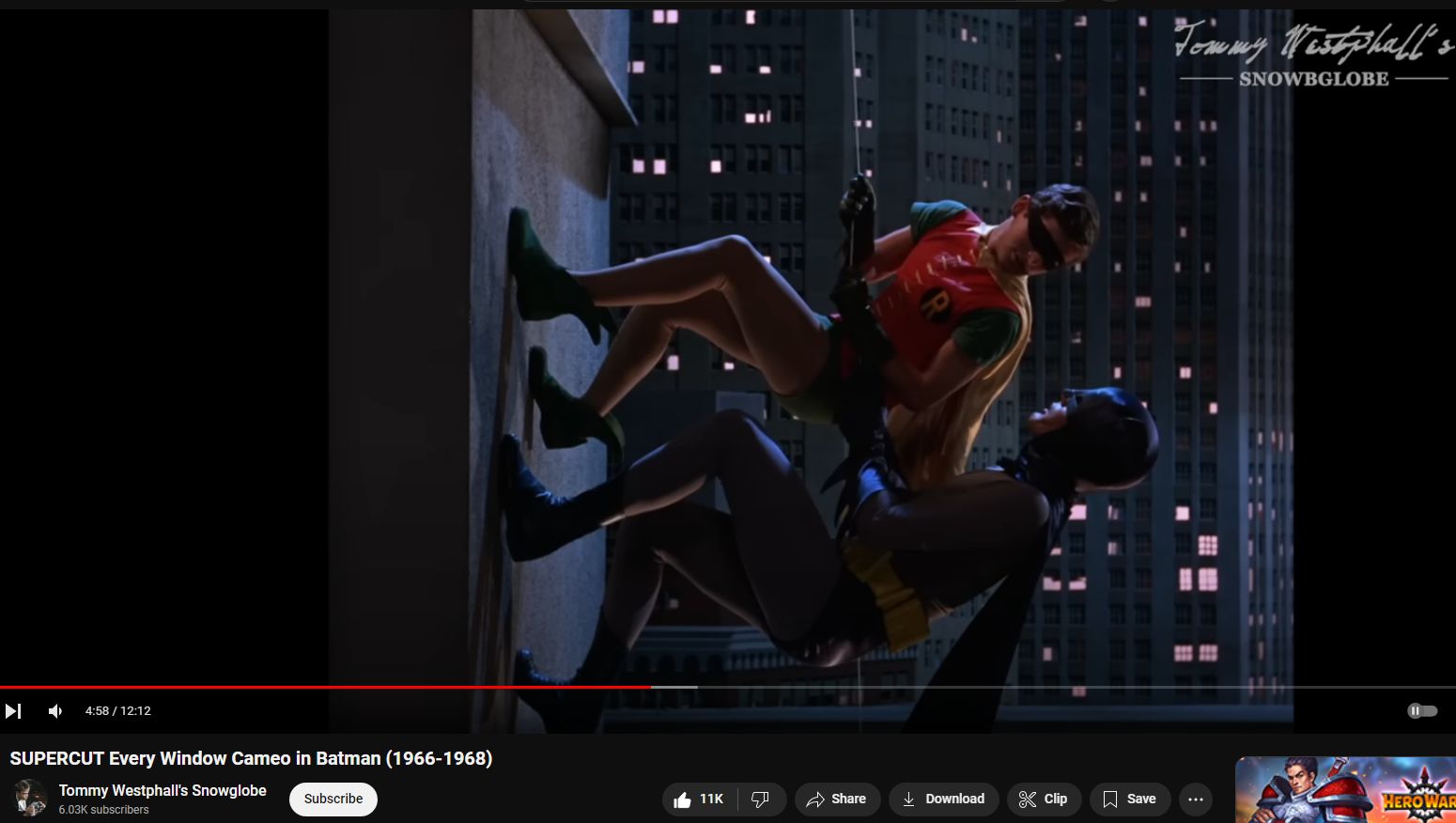
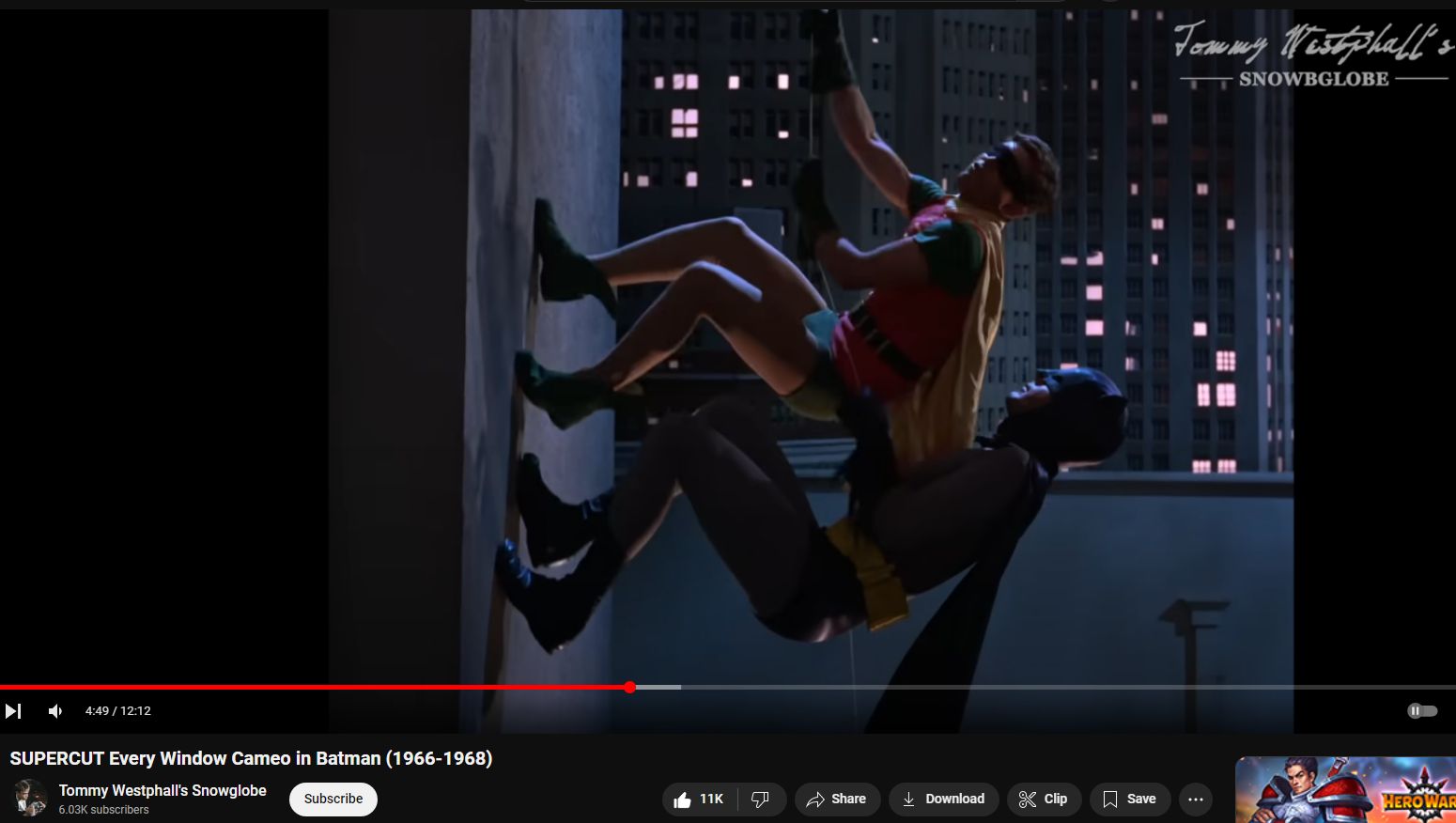
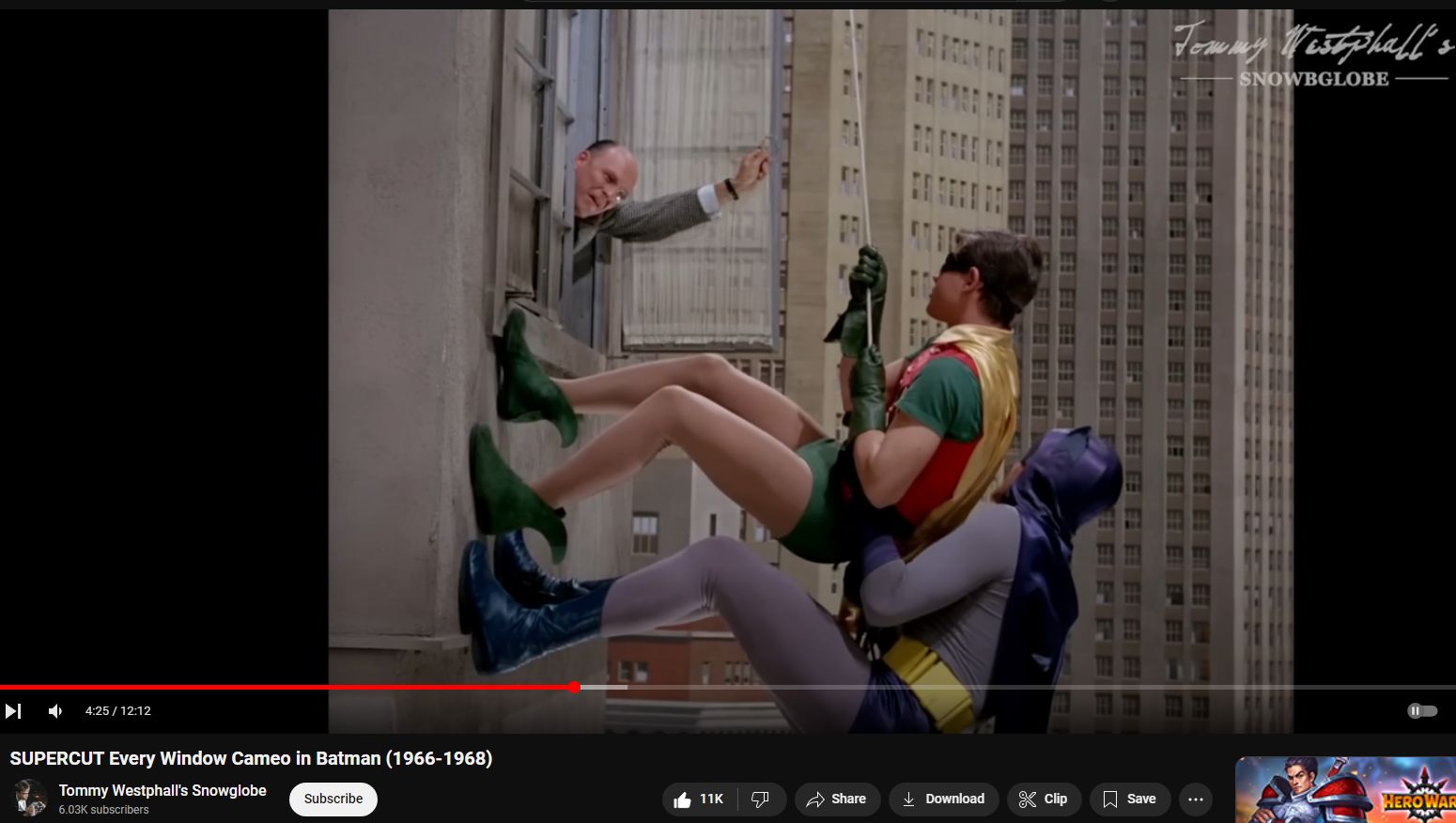
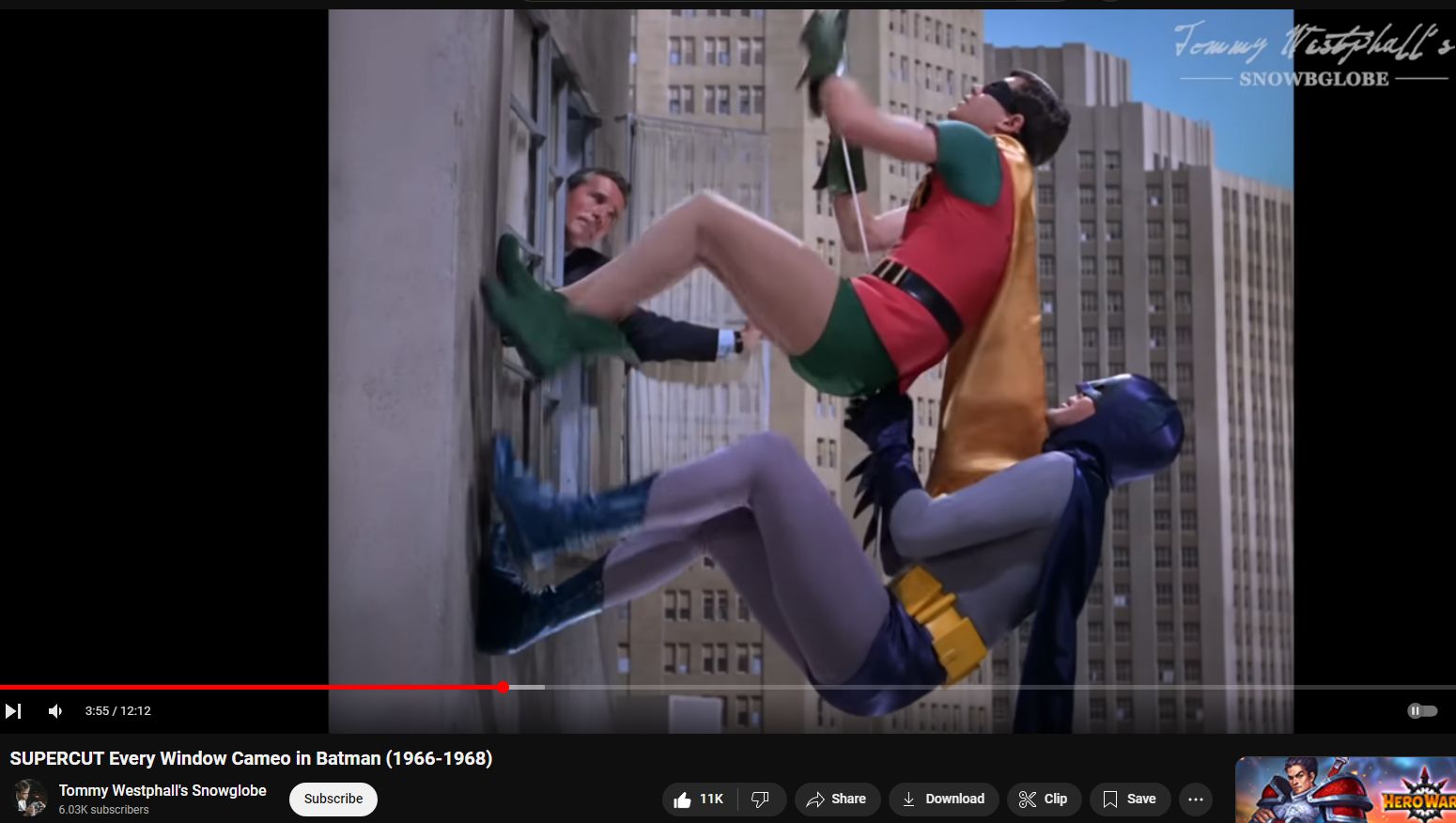
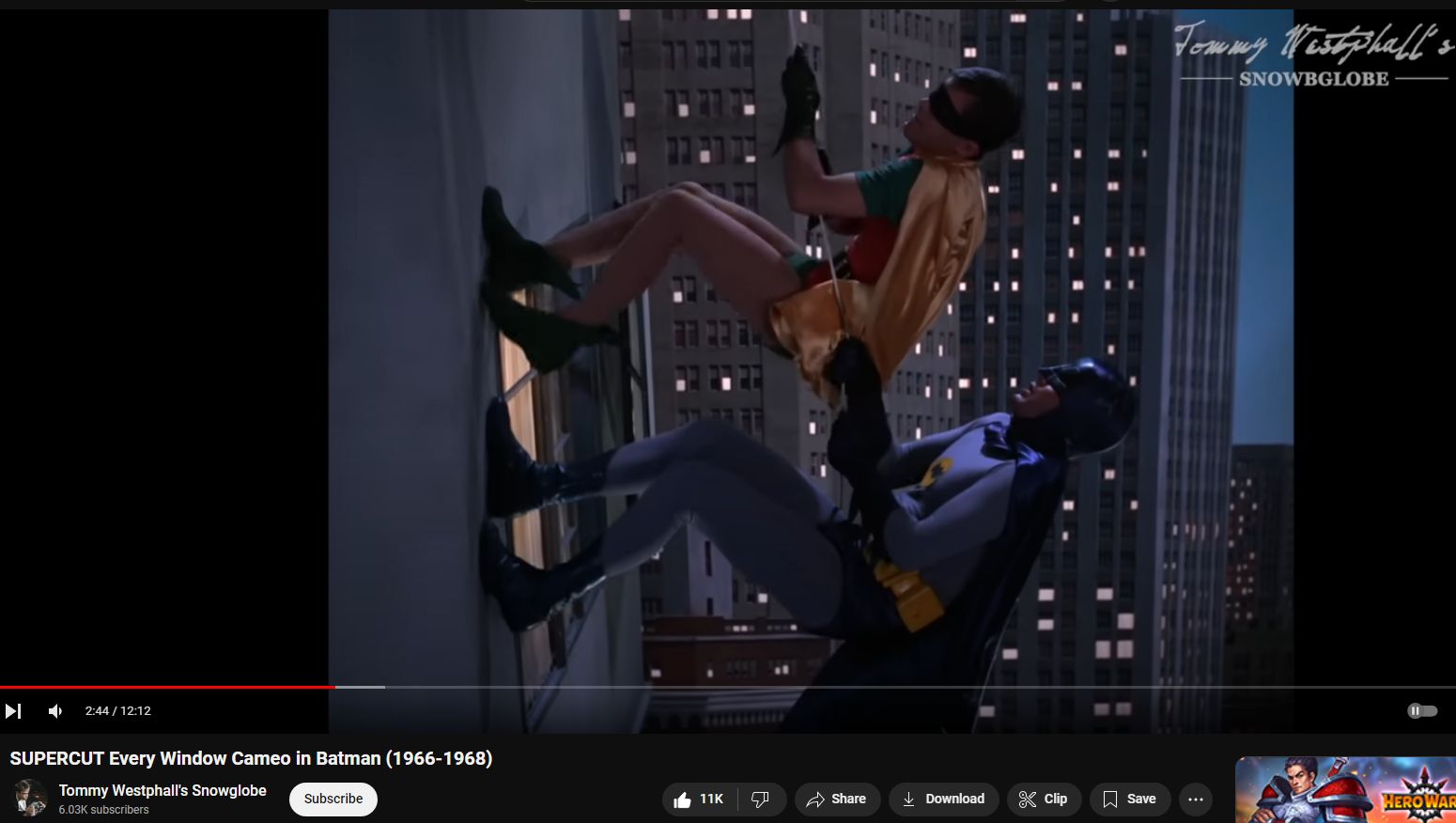
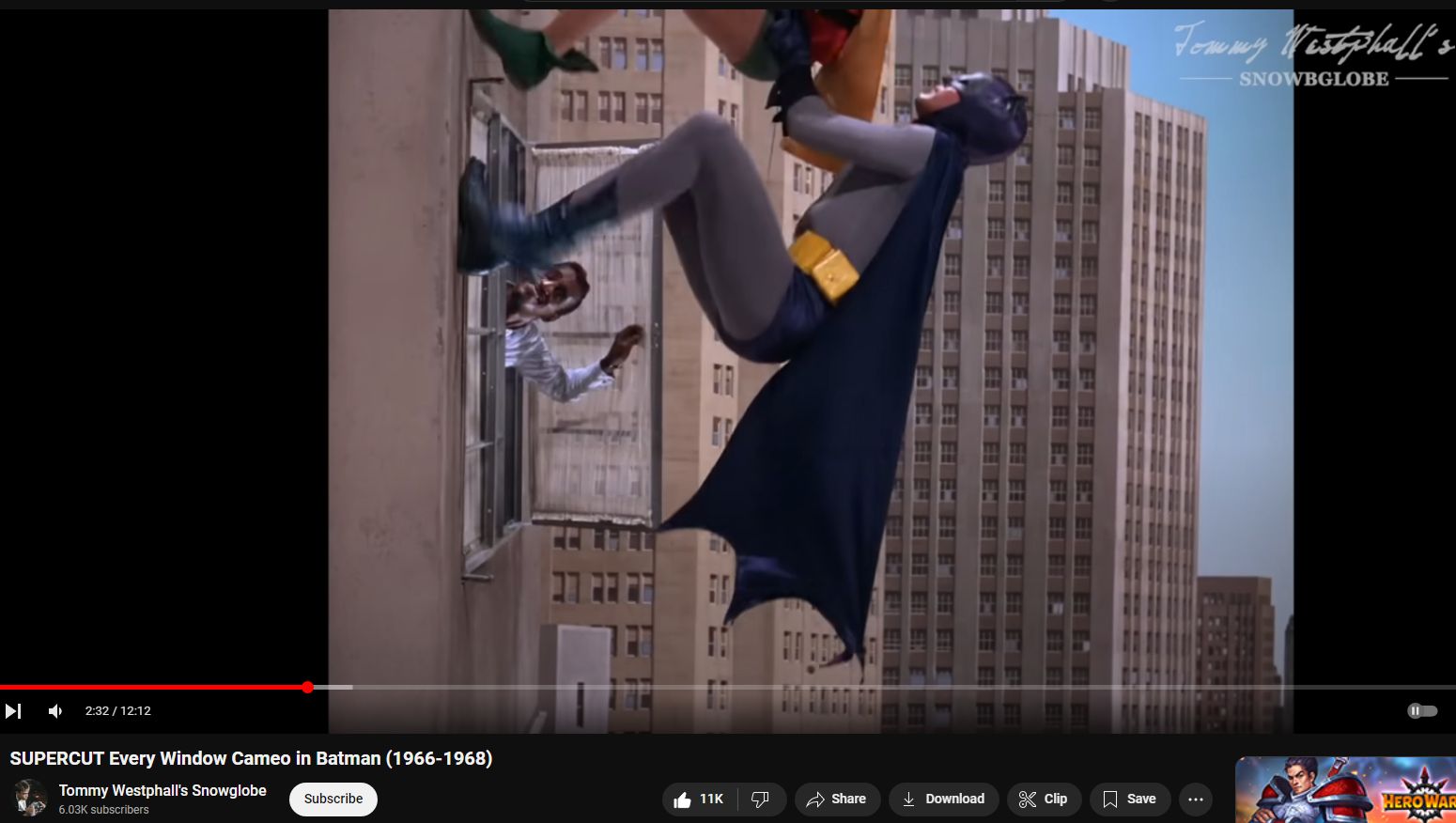
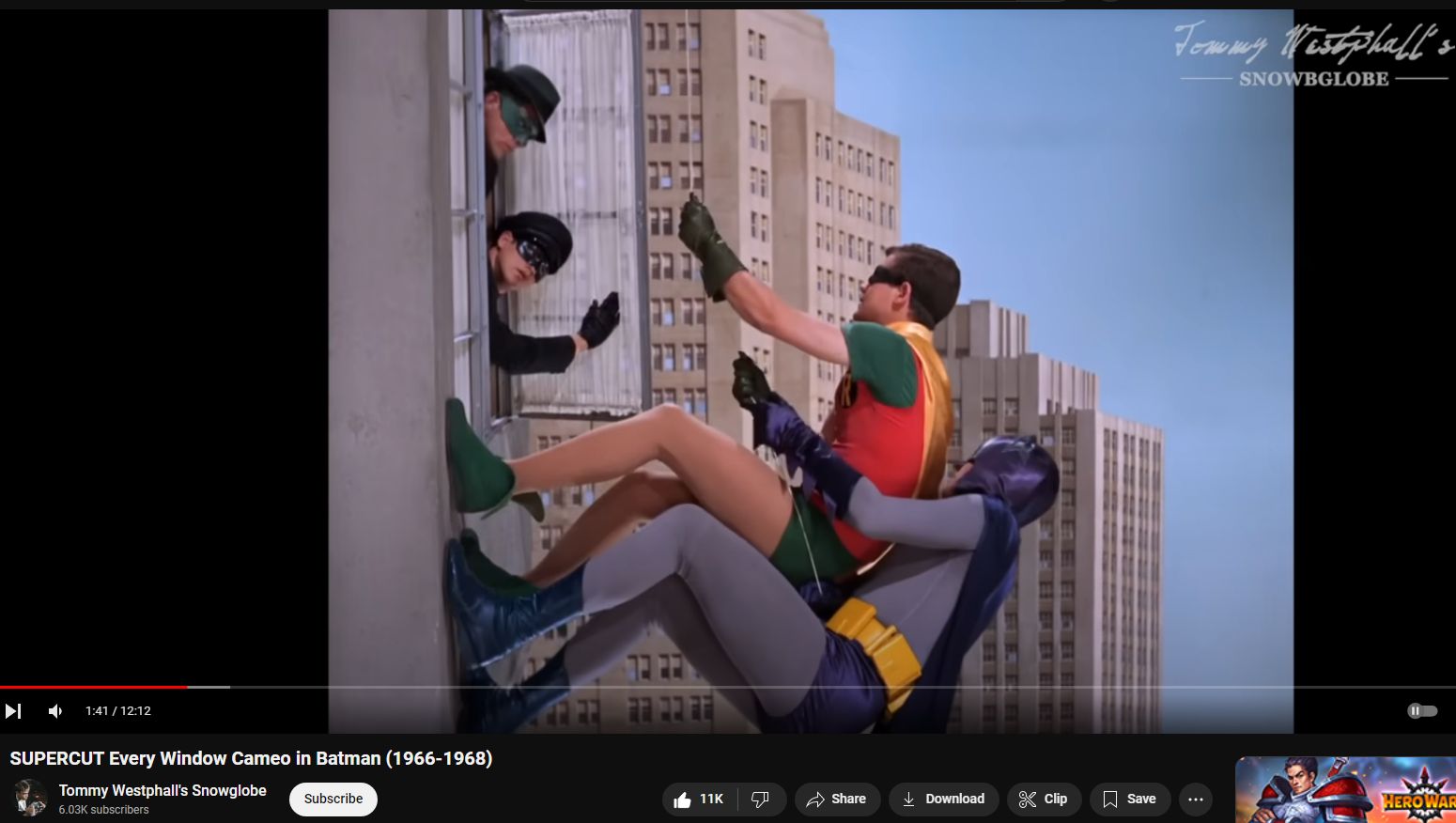
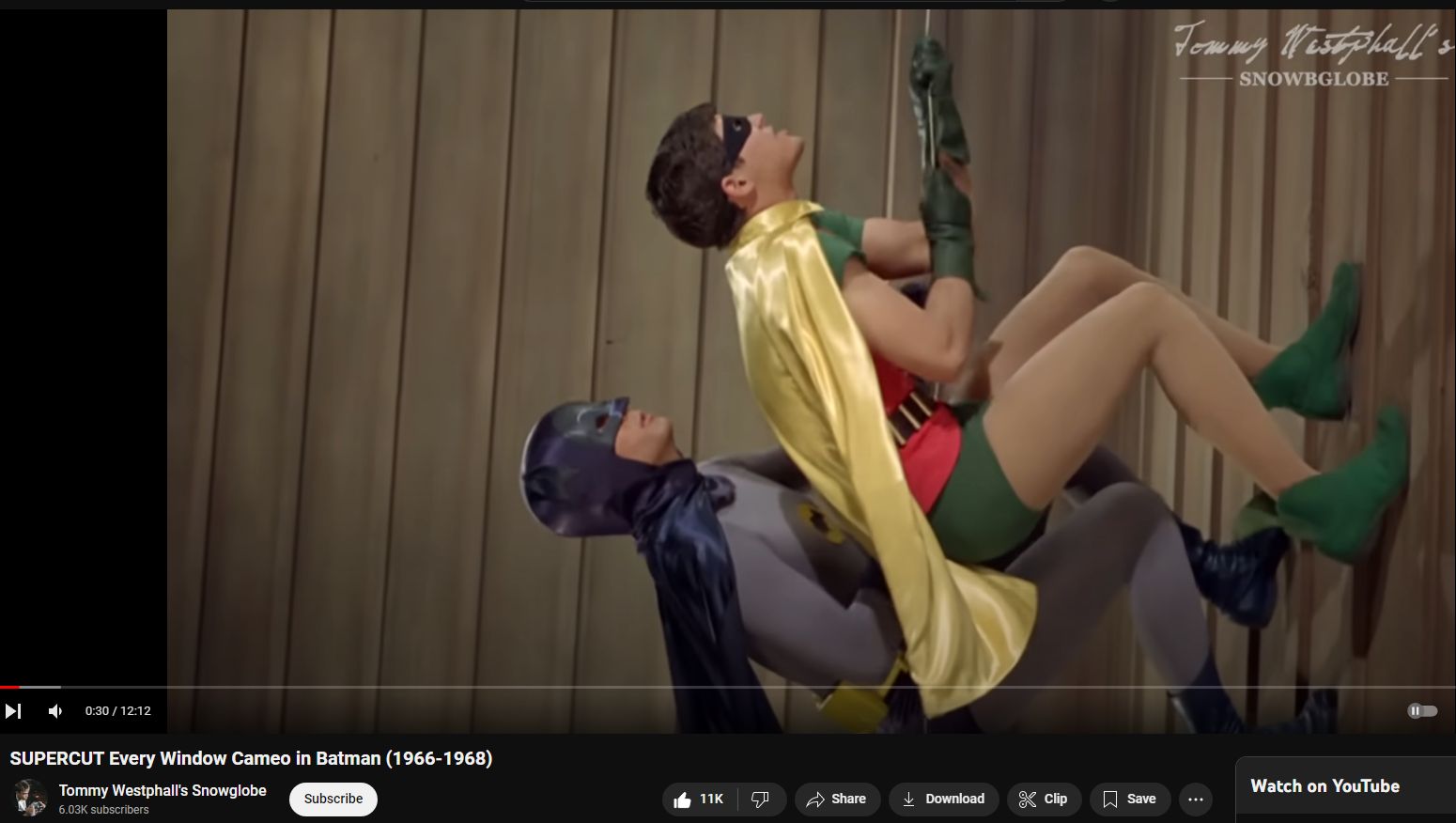
On the heels of Elvis’ Pelvis
(1) who played robin on batman and robin? (2) what did robin write, exposing batman and the development of batman tv series?
- Who played Robin on Batman and Robin?
- Robin has been portrayed by different actors in various adaptations. For the 1949 serial Batman and Robin, Robin was played by Johnny Duncan. In the 1960s Batman television series and its subsequent 1966 film, Robin was portrayed by Burt Ward.
- What did Robin (Burt Ward) write, exposing Batman and the development of the Batman TV series?
- Burt Ward, who played Robin in the 1960s Batman TV series, wrote an autobiography titled “Boy Wonder: My Life in Tights” in 1995. In this book, Ward revealed behind-the-scenes details about the making of the Batman TV series, including his experiences with the cast and crew, the pressures of working on the show, and the challenges he faced as a young actor. The book provided insights into the campy and often chaotic atmosphere on the set, as well as the impact the role had on his life and career.
(2) expound upon robin revealing that ‘batman stacked his package’ with toilet paper stuffing, attempting to increase his apparent on-camera cock-bulge, causing trouble for the censors
In Burt Ward’s autobiography, “Boy Wonder: My Life in Tights,” he shares various behind-the-scenes stories from his time on the Batman TV series. One of the more humorous and notorious anecdotes involves the efforts by Adam West, who played Batman, to enhance his physical appearance on camera. According to Ward, West allegedly stuffed his costume with additional padding, including using toilet paper, to create a more pronounced “package” or bulge in the crotch area of his costume.
This effort was reportedly part of an attempt to appear more imposing and masculine on-screen, a contrast to the character’s often lighthearted and campy portrayal. However, these enhancements did not go unnoticed by the production team or the network censors. The exaggerated bulge caused concern among the censors, who were already wary of the show’s potentially suggestive content, given its wide audience that included children.
The censors reportedly found West’s efforts problematic, as they believed it was inappropriate for a family-oriented television show. As a result, West was asked to stop using the extra padding to tone down the appearance, ensuring that the show remained suitable for all viewers.
This anecdote is often cited as an example of the lengths to which actors and production teams sometimes go to perfect their on-screen image, as well as the sometimes absurd battles between creative expression and censorship during that era of television.
(3) what is the book partially entitled “superheroes clad in tights”?
The book you are referring to is titled “Gotham City 14 Miles: 14 Essays on Why the 1960s Batman TV Series Matters.” The phrase “superheroes clad in tights” is part of the description or discussion within the book rather than its title.
*“Gotham City 14 Miles” is a collection of essays edited by Jim Beard, published in 2010. The book explores the cultural and historical significance of the 1960s Batman TV series, analyzing its impact on popular culture, television history, and the superhero genre. The essays delve into various aspects of the show, including its campy style, its approach to storytelling, and its influence on the portrayal of superheroes in media. The phrase “superheroes clad in tights” is likely used in one of the essays to describe the iconic, colorful costumes of Batman and Robin, which became a hallmark of the series and influenced how superheroes were visually represented on screen.
“Our Gods Wear Spandex: The Secret History of Comic Book Heroes” by Christopher Knowles. The title includes references to superheroes and their iconic attire, like tights and spandex, which are integral to their visual identity. Jay Dyer, known for his work on analyzing the deeper meanings in films and culture, often explores similar themes, but he is not the author of this particular book.
Jay Dyer has written extensively on Hollywood and its esoteric aspects in his book “Esoteric Hollywood: Sex, Cults, and Symbols in Film”, which delves into the symbolic and hidden meanings in popular films, though it may not focus exclusively on superheroes.